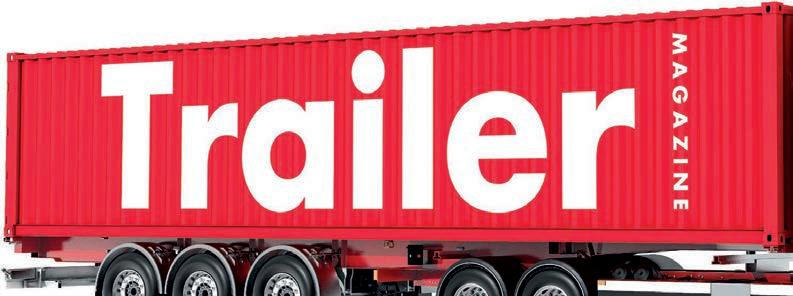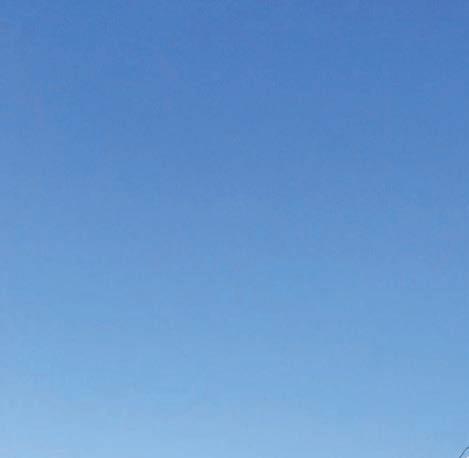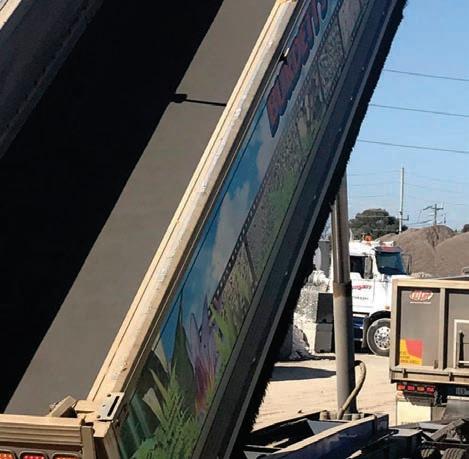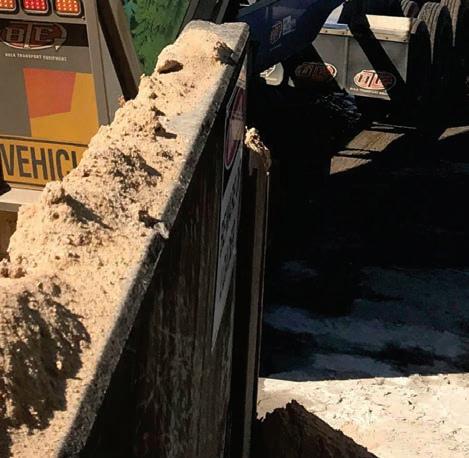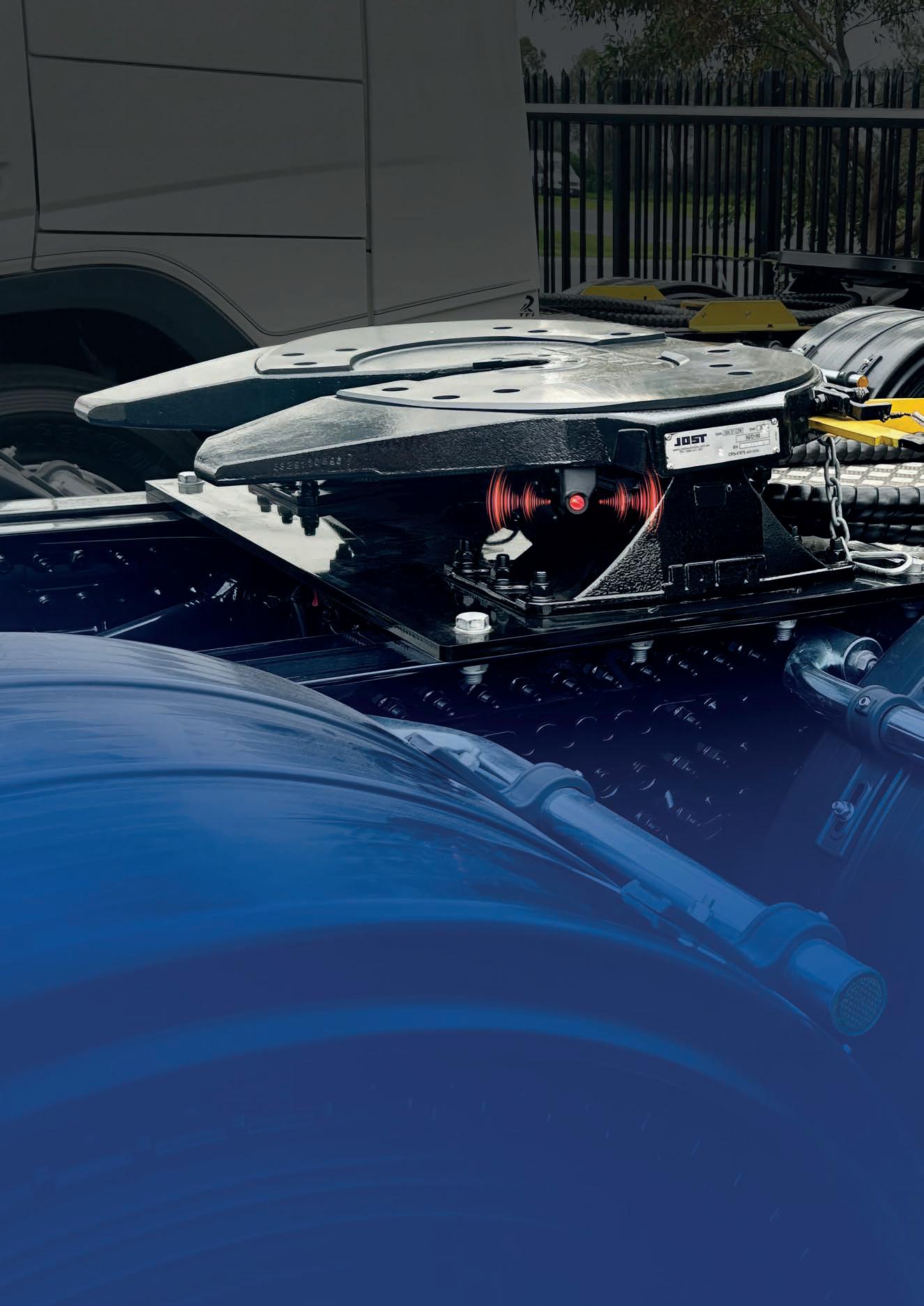










































PUBLISHER
John Murphy
john.murphy@primecreative.com.au
MANAGING EDITOR
Luke Applebee luke.applebee@primecreative.com.au
EDITOR
Peter White peter.white@primecreative.com.au
JOURNALIST
Sean Gustini sean.gustini@primecreative.com.au
CONTRIBUTOR
William Craske william.craske@primecreative.com.au
ADVERTISING
Con Zarocostas: 0422 222 822 conzarocostas@primecreative.com.au
Ashley Blachford: 0425 699 819 ashley.blachford@primecreative.com.au
DESIGN
Alejandro Molano
HEAD OF DESIGN
Blake Storey
CLIENT SUCCESS MANAGER
Isabella Fulford isabella.fulford@primecreative.com.au
HEAD OFFICE
Prime Creative Pty Ltd
379 Docklands Drive Docklands VIC 3008 Australia
SUBSCRIPTIONS 03 9690 8766 subscriptions@primecreative.com.au
Trailer Magazine is available by subscription from the publisher. Annual rates: AUS $99.00 (inc GST). For overseas subscriptions, airmail postage should be added to the subscription rate. The right of refusal is reserved by the publisher.
ARTICLES
All articles submitted for publication become the property of the publisher. The Editor reserves the right to adjust any article to conform with the magazine format.
COPYRIGHT
Trailer Magazine is owned by Prime Creative and published by John Murphy.
All material in Trailer Magazine is copyright and no part may be reproduced or copied in any form or by any means (graphic, electronic or mechanical including information and retrieval systems) without written permission of the publisher. The Editor welcomes contributions but reserves the right to accept or reject any material. While every e ort has been made to ensure the accuracy of information Prime Creative will not accept responsibility for errors or omissions or for any consequences arising from reliance on information published. The opinions expressed in Trailer Magazine are not necessarily the opinions of, or endorsed by the publisher unless otherwise stated.
O cially endorsed by the VTA

Two thousand twenty-five is now well underway, and for the transport industry, it’s off to a great start. Just within the first week of the new year the Australian Government announced that it would be funding an extra $7.2 billion into the Bruce Highway in order to “upgrade and fix” the notorious freight route and ultimately bring it up to a minimum three-star safety rating. The funding is the biggest investment ever made into the Bruce Highway, and it brings the total to more than $17 billion. This announcement is great news for our industry. We’ve seen some pretty dreadful incidents on the route in recent times and I’m hoping that the funding – which will see a new safety package fast-track critical projects along the whole corridor of the Bruce Highway – provide the improvements needed to make the route a much safer one to travel.
When making the announcement last month, Prime Minister Anthony Albanese spoke to the media about the significance of the funding.
“The figures are quite horrific,” he said. “[There were] 41 fatalities on the Bruce Highway in 2024. There’s been two fatalities in an accident already this year, and that’s why this is a priority.
“That’s why we’re singling out this highway above all others to contribute 80 per cent funding rather than the 50 per cent that is standard across other road and rail projects.”
You can read more about the upgrade and what it will entail in our Infrastructure spotlight section on page 52.
Trailer itself is also kicking 2025 off with a bang. Gracing this month’s front cover is one of four new Trout River Live Bottom trailers which South Australian transporter, Trimboli Services, has deployed from Freighter Group. You can read more about these new units on page 26 where we take a deep dive into their specs and features and how they’ve performed in the fleet’s operations.
Also packed in this edition are several other goodies. In our Economy section (page 22), we dissect the Victorian Government’s new Economic Growth Statement which looks to bolster the state’s economy, and from page 42 you can immerse yourself in a number of special reports about CouriersPlease, Austroads, Port of Melbourne and FedEx.
Around these stories, we bring you the most recent news in transport as well as in-depth editorials on the latest trailer materials and components from some of the industry’s biggest players.
Happy reading.




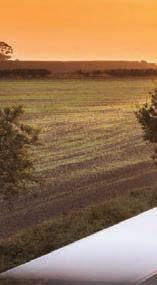

























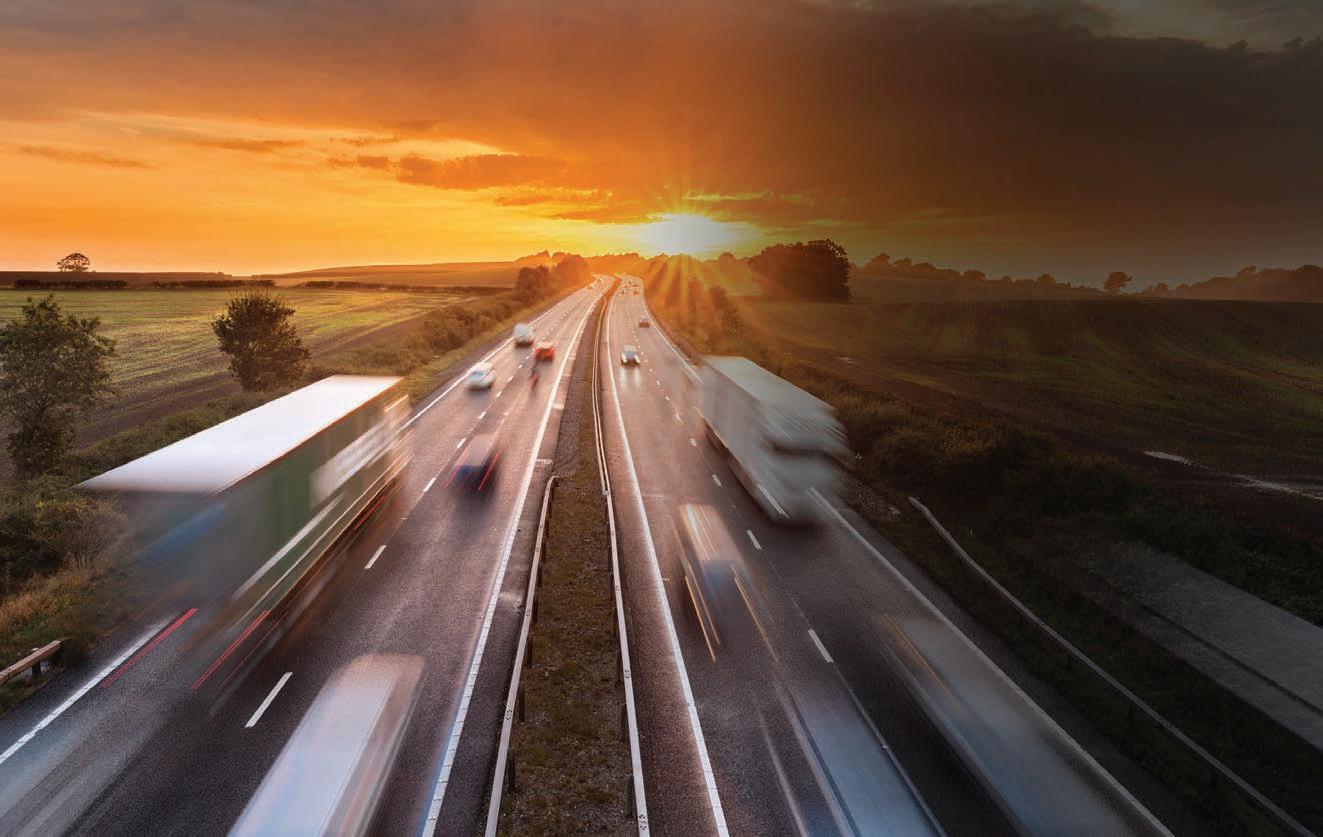










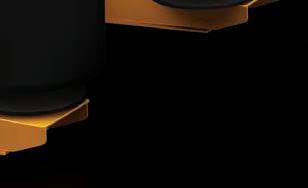








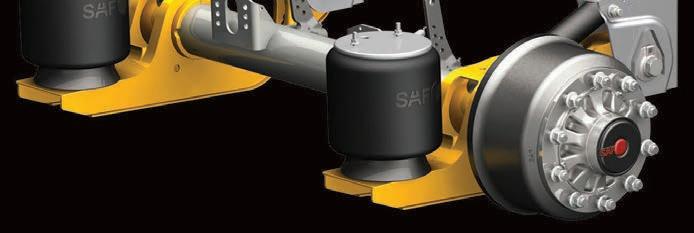




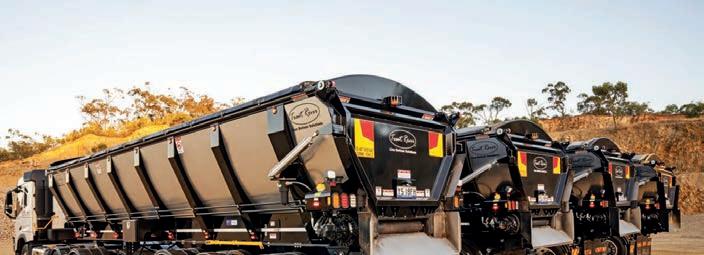


February 2025 26

Business partnerships, people movements, developments that bolster freight productivity and more.
22Economy
Everything you need to know about the Victorian Government’s new Economic Growth Statement.
26Trailer builder
Trimboli Services has deployed four new Trout River Live Bottom trailers from Freighter Group.
28Axles & suspensions
Pearce Smith Logistics keeps the streets of New South Wales clean while utilising BPW Transpec equipment.
30Moving floor
Giannopolous Transport’s latest application of a KEITH Walking Floor system has resulted in a series of benefits.
32Weighing systems
E-Max has moved into a brand-new facility which is the key to setting the business up for the future.
34Trailer building materials/components
A showcase of the products and services that keep trailers on the move.
40ALRTA
The Australian Livestock and Rural Transporters Association is launching its ‘Braking Habits’ project.
42Special reports
Find out about the latest developments at CouriersPlease, Austroads, Port of Melbourne and FedEx.
52Infrastructure spotlight
What you need to know about Australia’s biggest road projects this month.
54World map
Purdue University teamed up with Wabash to investigate an experimental trailer that recaptures its own electricity.
56Fleet of the month
Tony Innaimo Transport has deployed a commemorative Kenworth T909 and B-double combination.
58What’s on Upcoming shows and field days.
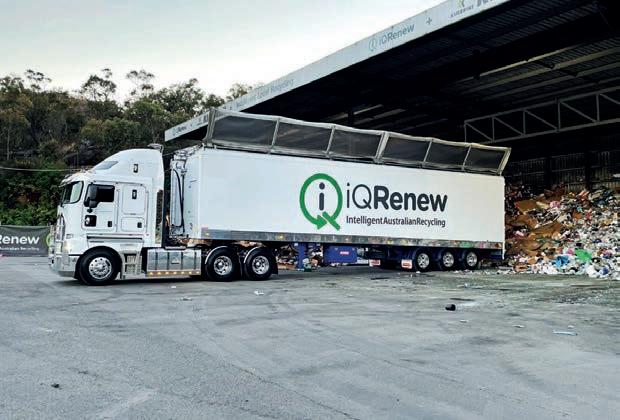

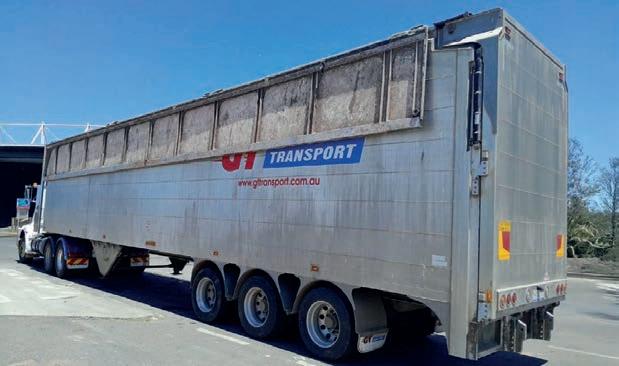

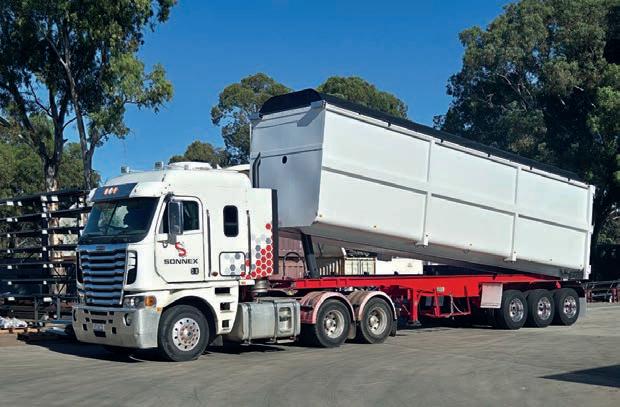




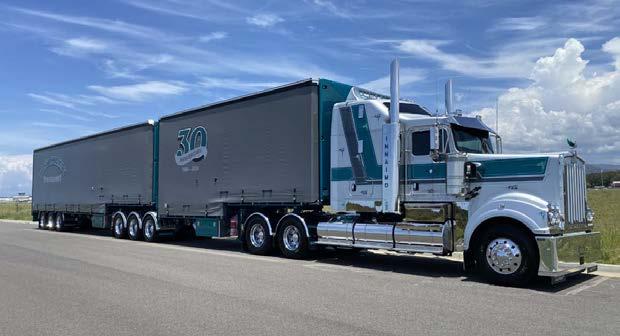
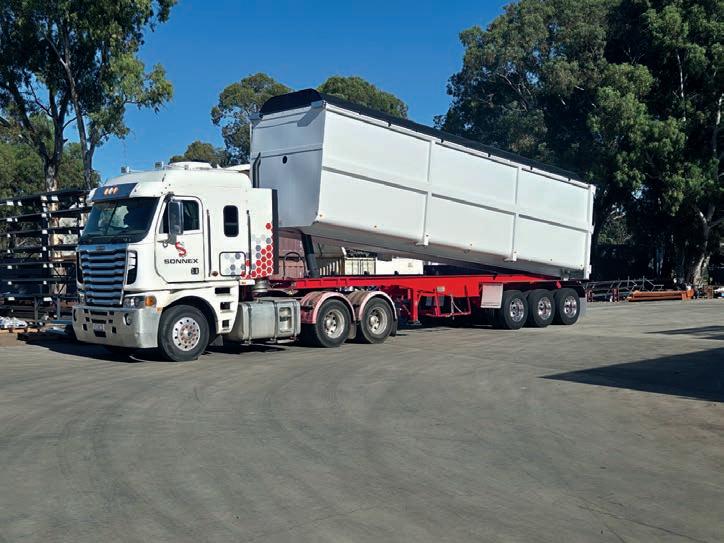


Western Australia 5 Freight Road, Kenwick WA, 6107
Tel -(08) 9350 6470
Refrigerated transport specialist, Hawk Logistics, has announced its acquisition of Farragher Logistics.
As part of the transition, Farragher Logistics’ experienced team of drivers and assets will join Hawk Logistics, bringing expertise that will strengthen the quality of service the company provides to its customers.
The strategic acquisition of the company expands Hawk Logistics’ service capabilities and national reach, reflecting its commitment to delivering reliable and efficient transport solutions nationwide.
Hawk Logistics CEO, Miguel Vitug, told Trailer the purchase of the 91-year-old company aligns perfectly with Hawk’s growth strategy.
“It really strengthens our service offering and helps expand our business, because along with the acquisition and the drivers, we’ve also acquired the

customer base that Farragher’s has had for the last five to 10 years,” he said.
According to Vitug, the acquisition will also double Hawk Logistics’ road train operations in the east coast.
“We’re increasing our east coast to west coast movements by an additional six road trains a week on top of the five that we are already doing with the Hawk customer base,” he said.
“So, it really strengthens our footprint in Perth and business in the east coast by doubling our road train services.”
In terms of the new business, Hawk Logistics has acquired 40-plus assets and an extra 10 drivers.
In addition, it will have the support of Farragher Logistics’ former owner, Rory Farragher.

“For us, this acquisition has been in the making for a while now,” Vitug said.
“We’ve been working on negotiations, due diligence and integration for the last three months and it’s one of the many exciting things that have happened in the Hawk world.”
Singapore Post has entered into a sale and purchase agreement with Pacific Equity Partners (PEP) for the sale of its Australian business, Freight Management Holdings.
PEP will acquire FMH Group at an enterprise value of $1.02 billion which translates into $775.9 million in cash.
With PEP as its new owner, FMH Group is expecting to be well-supported to build on its strong foundation, accelerate its growth strategy and continue delivering value and market leading service to its customers.
The news follows Singapore Post’s acquisition of Border Express early last year and the announcement that FMH Group had merged with CouriersPlease later in July.
According to FMH Group, customers and carrier partners can expect the same high level of service and innovation as the company enters this new phase of growth.
“This is an exciting milestone for FMH Group,” said FMH Group CEO, Simon Slagter.
“We have built a foundation of trust with our customers, achieved significant
growth, and led the way in providing excellent logistics services.
“The investment of Pacific Equity Partners will help us take the next leap forward, empowering us to further enhance our technology platform, turbocharge our business development function and pursue strategic acquisition opportunities, strengthening our position as industry leader and unlocking even greater value for our customers.”
Pacific Equity Partners Managing Director, David Brown, said the company is thrilled to welcome FMH Group to its portfolio.
“FMH Group has a stellar track record of growth, a passionate team and a clear and compelling trajectory,” he said.
“We look forward to supporting them to build on their success and facilitate further opportunities.”
Singapore Post Chairman, Simon Israel, explained that since the company’s initial investment in FMH Group in 2020, it has witnessed the group achieve extraordinary growth.

Now, with its strong market position and growth pathway, the Board has decided it is “time to realise the substantial shareholder value created”.
“The transition of FMH Group ownership to PEP will support its continued upward trajectory,” Israel said.
The proposed divestment is subject to regulatory approvals such as approvals from the Foreign Investment Review Board of Australia, and Singapore Post obtaining the requisite approval from shareholders in a general meeting of Singapore Post to be convened.
Toll Group is investing $100 million into healthcare services across the Asia Pacific, a move which will deliver economic benefits to Australia.
This investment will grow supply chain capabilities and assets and provide scalability for customers across Southeast Asia and beyond.
Federal Minister for Trade and Tourism, Don Farrell, welcomed the investment while attending an AustCham event in Singapore.
The event was part of a four-day visit for the Singapore-Australia Joint Ministerial Committee – an annual meeting which underlines the importance and depth of the relationship between Australia and Singapore.
“Toll is showing what is possible and it is precisely the sort of investment that we were aiming to support when the Government launched our Southeast Asia Economic Strategy to 2040,” Farrell said.
“When Australian businesses go out into the region, the benefits come home.”
Austrade Senior Trade and Investment Commissioner, Singapore, Kirstyn Thomson, said Toll’s investments bring to life the vision that was laid out in Invested: Australia’s Southeast Asia Economic Strategy to 2040
“Australia has a globally integrated and highly advanced healthcare industry,” she said.
Coynes Freight Management Group, a third-generation family-owned transport company based in Melbourne, has been acquired by Butler Freight Services.
The acquisition marks an exciting new chapter for both Butler Freight and Coynes Freight Management, bringing together two industry leaders to better serve Australia’s transport and logistics needs.
The Coynes Freight Management brand will continue to operate under the ownership of Butler Freight, ensuring continuity for its valued customers.
Additionally, all members of the Coynes team will remain employed, preserving the expertise and dedication that have been hallmarks of the Coynes operation.
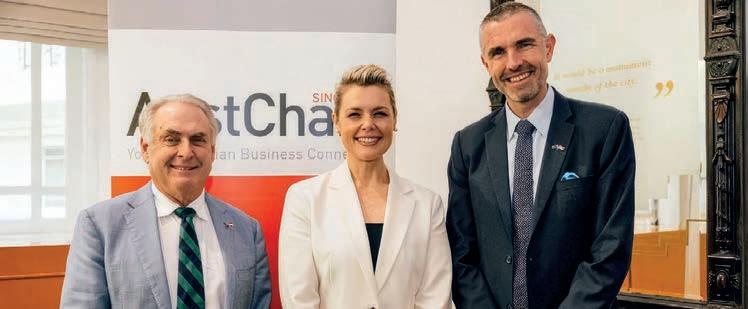


“Toll’s investment into the region will help more Australian innovators to export and aims to ensure the safe and secure distribution of pharmaceutical, therapies and healthcare devices throughout the region.”
The company’s Australian investments include the construction of several specialist healthcare facilities such as a state-of-theart centre in Melbourne for CSL Seqirus and a new facility in Richlands, Queensland, for vaccine distribution.
Additionally, Toll is set to open a facility in Hazelmere, Western Australia, by mid-2025.
Toll Chief Enterprise Services Officer, Anna Green, emphasised the economic benefits of this investment.
“We anticipate this investment will generate hundreds of new jobs in Australia and Asia,” she said.
“We are honored to have acted as sell-side advisors to the third generation of the Coynes family, facilitating the sale of their iconic business, Coynes Freight Management,” said the company’s sellside corporate advisor, EP Advisors.
“As the family prepared for retirement, they entrusted EP Advisors with a clear mandate: to secure a strategic industry buyer who would uphold the legacy of the business.
“The selection of Butler Freight as the acquirer ensures that the Coynes brand, team, and values will remain intact while benefiting from the resources and vision needed to drive future growth.
“We congratulate both the Coynes family and Butler Freight on this exceptional
“In Australia, around 130 healthcare jobs have been added to Toll’s existing 6,000plus strong workforce, which is expected to grow as further investments in property and technologies are made.”
This initiative, she said, will not only enhance Australia’s supply chain capabilities but also strengthen local economies by boosting digital and healthcare skills.
“Toll is well positioned to partner with Australian businesses as they enter and grow in Southeast Asia,” Green said.
“Our enhanced supply chain network and capacity will give Australian exporters access to a strategic hub in Southeast Asia, and proximity to Toll’s networks in key growth markets like Malaysia, Indonesia, and India.”
partnership and are proud to have played a role in this significant transition.”
Established in 1950 by Neville Coyne and his father, Bob Coyne, Coynes began as a newspaper delivery business and has grown into a leading independent transport company specialising in wharf container cartage.
Over its 74-year history, Coynes has built a reputation for reliability and excellence in freight management.
Operating a modern fleet of over 70 vehicles including Super B combinations, B-doubles, sideloaders and prime movers, Coynes offers comprehensive services such as container cartage, warehousing, unpacking/packing and goods distribution.
DHL Supply Chain Australia has announced the groundbreaking of its state-of-the-art Transport Hub in Derrimut, Victoria.
Due for completion in June, the new site will help facilitate the ongoing growth of DHL’s Transport sector, with 16,600 square metres of additional warehouse and office space.
The site will feature a substantial double-sided loading area with increased throughput capacity compared to DHL’s current transport facility to better serve DHL’s customers including those in retail, technology, automotive, life science and healthcare sectors.
DHL is also planning to roll out an advanced automated sortation system which is due to be operational by 2026 to enable rapid and accurate distribution of large volumes of a variety of package types.
DHL Supply Chain CEO, Steve Thompsett, said the new transport hub is a key part of the company’s focus on strengthening its transport service offerings for existing and new customers.
“In a nutshell, DHL is always looking for ways to perform best for customers while making sure we’re growing sustainably for the future of our employees,” he said.
“We’re committed to continued growth in transport so we’re offering the right blend of transport services combined with the 3PL services for which we’re renowned.
“Importantly, we’re also acting upon the targets of our Global Environmental and Energy Policy through our services and can partner up with our customers to help them fulfil their own sustainability goals.
“All of these objectives are linked to our ambition of maximising the opportunities
available to our workforce, which is serving our customers in every Australian state and territory.”
As with all new DHL facilities to be constructed in Australia, the Derrimut Transport Hub is being built with sustainable features in mind.
It will include a rooftop solar array, LED lighting, a solar hot water system and an intelligent building management system to minimise power usage.
Futureproofing the site technologically, the build will incorporate charging provisions for the company’s growing electric truck and van fleet.

The Sydney Swans has renewed its partnership with Transport for NSW to continue promoting road safety.
After lending its star power to road safety campaigns such as ‘Get Your Hand Off It’ and ‘Don’t Fly Blind’ in recent times, the football club will continue to collaborate with the New South Wales Government.
At the end of last year, Transport for NSW Executive Director of Transport Safety, Chadi Chalhoub, said this marks the 10th anniversary of the partnership with the Sydney Swans – making the renewal a significant milestone.
“We’re proud to have the women’s team now join the effort, influencing both current and future generations of road users in Sydney,” he said.
“Road crashes have claimed the lives of 321 people in NSW so far this year (as of Wednesday, 11 December 2024) – two more than at the same time last year.”

It also came at a crucial time as the holiday season approached which tends to see increased travel.
“With the holiday season fast approaching, we urge everyone to take extra care on the roads,” Chalhoub said in December.
“Let’s all do our part to ensure that this festive season is filled with joy, not tragedy.”
To kick off this new chapter, Sydney Swans players Isaac Heeney, Nick Blakey, Logan McDonald and Cynthia Hamilton
recently led an AFL skills session for students aged 15-17, highlighting the importance of road safety ahead of the holiday season.
The session blended football drills with discussions on making safe and informed choices on the road – especially during the festive season when roads are often busier.
Sydney Swans CEO, Tom Harley, said the club is excited to continue its commitment to road safety as proud partners of Transport for NSW.
“We know that our members, fans and the broader community look to us as role models, and through this partnership, we have the unique opportunity to influence safe driving behaviours across NSW,” he said.
“Together, we aim to make a lasting impact on road safety by reaching out to all generations of drivers, inspiring them to make safer choices behind the wheel.”
Western Australian transport and logistics company, Sullivan Logistics, has extended its partnership with the West Australian Football League (WAFL).
As part of the collaboration, Sullivan Logistics has become the competition’s naming rights sponsor for the next four years.
The agreement also includes naming rights to the WAFL Little League and presenting partner of WAFL Regional Games.
In addition, Sullivan Logistics is now a major partner of the Kia WAFL State Team and WAFLW State Team as well as major partner of the WAFLW and Rogers Cup competitions.
Having been a major partner of WAFL for the past two seasons, this new agreement highlights Sullivan Transport’s commitment to supporting all levels of
football across the state.
Sullivan Logistics Directors, Tim and Leon Sullivan, are both avid football supporters and were excited to extend their support.
“As a proud, family-owned business based in Western Australia and long-time supporters of WA footy, we are thrilled to become the new meaning rights partner of the WAFL,” Tim Sullivan said.
“Over the past two years, we have loved our role as a major partner, supporting everything from the little league, to WAFL and WAFLW competitions.
“This extension to our partnership feels like a natural progression, and we’re excited to play an even greater role in the WAFL’s future over the next four years.
“As the WAFL continues to grow and thrive, we look forward to further strengthening our ties to WA football and the community. We would also like to express our gratitude

to the Western Australian Football Commission for providing us with this incredible opportunity.”
West Australian Football Commission CEO, Michael Roberts, said he is delighted that Sullivan Logistics has joined forces with the WAFL as the official transport and logistics partner and naming rights partner.
“Having Sullivan Logistics as a naming rights partner is a great result for the WAFL and the health of the game in WA,” he said.
“The WAFC values the support that his team have provided over the past two years and look forward to working closely over the next four years in male and female football throughout the state.”


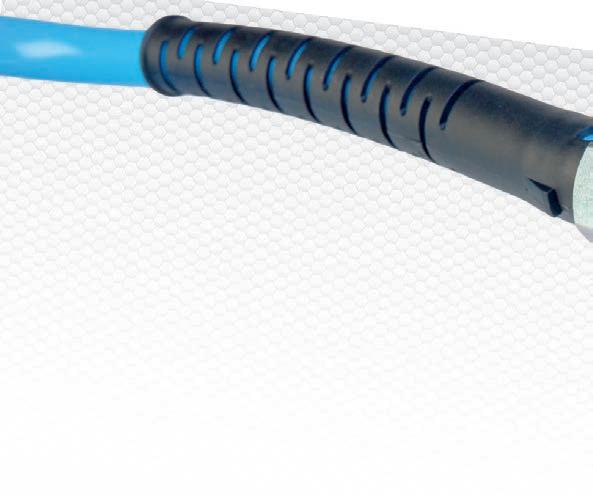


• CLIPLOCK features a TWO-STAGE locking mechanism. The industry standard and the Optional innovative GP LOCKING CLIP & LOCKING GROOVE (PATENT PENDING).
Prevents incomplete coupling connections of Trailer Airline Couplings.
• A dangling Locking Clip will alert the driver that the Coupling Connection may not be securely connected.
• Ensures positive and secure connection of the Trailer Airline Couplings.




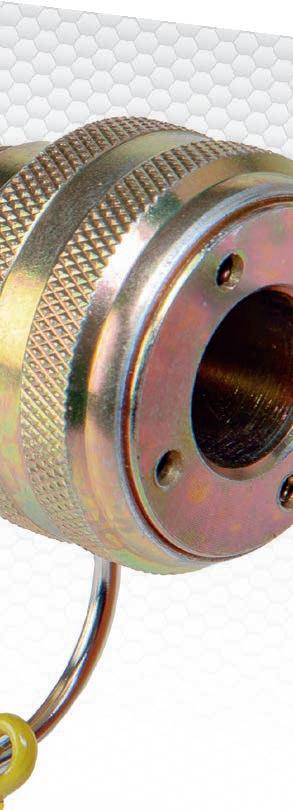














JOST has introduced its new JSK38CX Heavy Duty fifth wheel into the Australian market which, arriving from Brazil, replaces the previous JSK39C version.
Crafted to supercharge efficiency, the 90mm-centre fifth wheel is available in multiple mounting heights and with options for fixed plate, ball race and slider assemblies.
The product comes with the option for either steel or polymer inserts (grease or greaseless), making this model very universal for fleets.
The standard JSK38CX is also able to have upgrade kits fitted, such as JOST’s two-point sensor kit which has a sensor for the king-pin engagement and a sensor for the operating handle in the closed/locked position.
In addition, it offers pneumatic operation
for uncoupling and coupling, reducing manual effort and increasing efficiency.
According to JOST Australia General Manager – Sales and Marketing, Corey Povey, it is the ideal fifth wheel for heavyduty and multi combination applications.
“It comes with a D-Value of 260kN and has a 38-tonne imposed load rating,” he told Trailer
“So, it’s going to be a great fit within our 2025 product portfolio, ticking the box for many options with just the one casting.”
The fifth wheel also comes standard with features such as C type mounting cushions which make it both extremely reliable and versatile.
“It’s all about comfort, safety and reliability,” Povey said.
“Globally, JOST is known for being innovative and delivering technology and
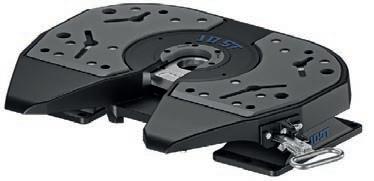
safety to the market – and the JSK38CX is another example of this.
“I’m pretty sure we’re the only fifth wheel supplier in Australia that can offer a 90mm fifth wheel with these safety features.”
According to JOST, the heavy duty cast fifth wheel is ‘unmatched’ due to its strength coupled with the OEM’s renowned safety features.
Australia Post’s support office in Melbourne has moved from the CBD to the inner east suburb of Burnley as part of its focus to become a ‘financially and environmentally sustainable’ business.
The move to 480 Swan Street – which has seen Australia Post depart from its longstanding CBD base at 111 Bourke Street – is expected to save millions of dollars in leasing costs each year and is core to the organisation’s Post26 strategy.
Australia Post’s 3,000-strong support office team occupy eight levels and nearly 24,000 square metres within a newly constructed 11-storey building, while providing a substantial boost for local businesses in the area.
The Swan Street location was selected from a short list of suburban locations due to its cost-effectiveness and close proximity to transport including trams and CityLink. Burnley Railway Station is also just metres away with a direct walkway link to the office entrance.
According to Australia Post, local customers and community are already benefitting from its presence in the area following the opening of a new Burnley Post Office and free 24/7 parcel locker hub on the ground floor at 480 Swan Street, one of the shopfronts within a new 1,000-square-metre retail space.

and it’s been great to see the Burnley and Richmond communities welcome us to the neighbourhood,” he said.
“We are proud to be working within a space with such outstanding environmental credentials, and an industry-leading Green Star rating. Importantly, this move supports our work to modernise and streamline our business under the Post26 Strategy as we look to continue delivering for our customers into the future.”
More than 4,500 furniture items have been refurbished, recycled or repurposed from the previous Australia Post head office at 111 Bourke Street.
the 480 Swan Street building has 32,000 square metres of total office floor space and is fully electric and carbon neutral.
In addition to a ‘world-leading’ 6-star Green Star Design and As Built Rating the building has a 5 Star NABERS Office Energy Commitment Agreement.
An ‘all-electric’ mechanical central plant is reducing the building’s reliance on natural gas while minimising CO2 and refrigerant fugitive emissions.
In combination with the purchase of carbon credits, this has allowed the building to be certified as Carbon Neutral.
Western Australian transport operators will now have the option to use the state’s new Restricted Access Vehicle (RAV) warning signs following a Heavy Vehicle Road Signage Reference Group (HVRSRG) meeting.
The HVRSRG was formed in response to concerns raised by the state’s transport industry regarding the new RAV warning signs requirements.
As a result of the meeting towards the end of last year, it was determined that transport operators will not be required


to replace the current ‘Long Vehicle’ and ‘Road Train’ signs with the new RAV warning signs.
For vehicles longer than 22 metres, operators will be able to choose between the existing ‘Long Vehicle’ and ‘Road Train’ signs or the new graphic signs that show the length of the vehicle (eg. 27.5m, 36.5m or 53.5m).
According to the WA Government, the new optional RAV warning signs offer several benefits such as providing more information to other road users and
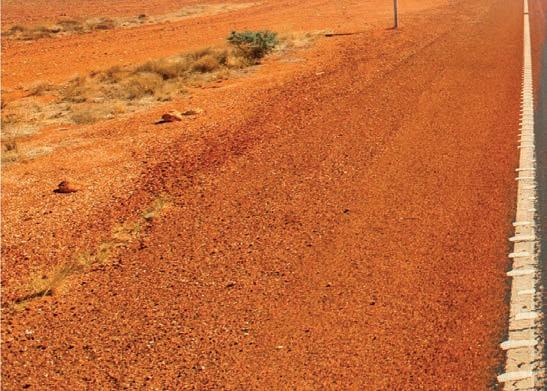
helping them to decide if it is safe to overtake a road train or long vehicle.
The signs can also educate drivers about the length of road trains using clear images and car graphics for comparison.
“Operators can use the new signs instead of, or in addition to, the traditional ‘Road Train’ or ‘Long Vehicle’ signs,” the WA Government said.
“This flexibility allows operators to choose the best signage for their specific vehicle length and configuration.”

The Victorian Government is supporting the state’s multi-billion dollar grain industry through repairing a busy section of the Western Highway.
Crews have begun rehabilitation works on a one-kilometre stretch of the Western Highway in Lawloit between Kaniva and Nhill as part of this year’s $964 million investment in road maintenance.
This section of highway helps move thousands of tonnes of grain from farms across the region to storage facilities at Nhill each year – supporting Victoria’s $4.4 billion grain industry.
As a major link between South Australia and western Victoria, the highway also helps to keep hundreds of thousands of drivers and millions of tonnes of freight on the move between Melbourne and Adelaide each year.
With much bigger, heavier trucks on our roads, these works are vital to improving the resilience of the road network and ensuring goods can travel to the state’s ports and markets.
“We’re rebuilding this stretch of the Western Highway to ensure the road is more resilient to handle larger,
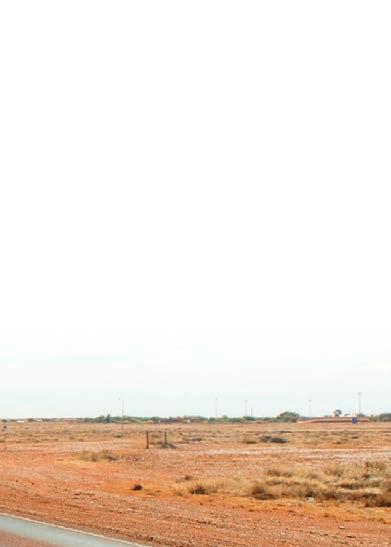

heavier trucks that are getting goods to market – supporting the farmers, freight operators and families who rely on it every single day,” said Victorian Minister for Roads & Road Safety, Melissa Horne.
“Our crews are working tirelessly to rebuild, repair and resurface roads right across the state as part of our $964 million investment in road maintenance.”
The works to rebuild and strengthen the road are expected to take around two months to complete, weather permitting.
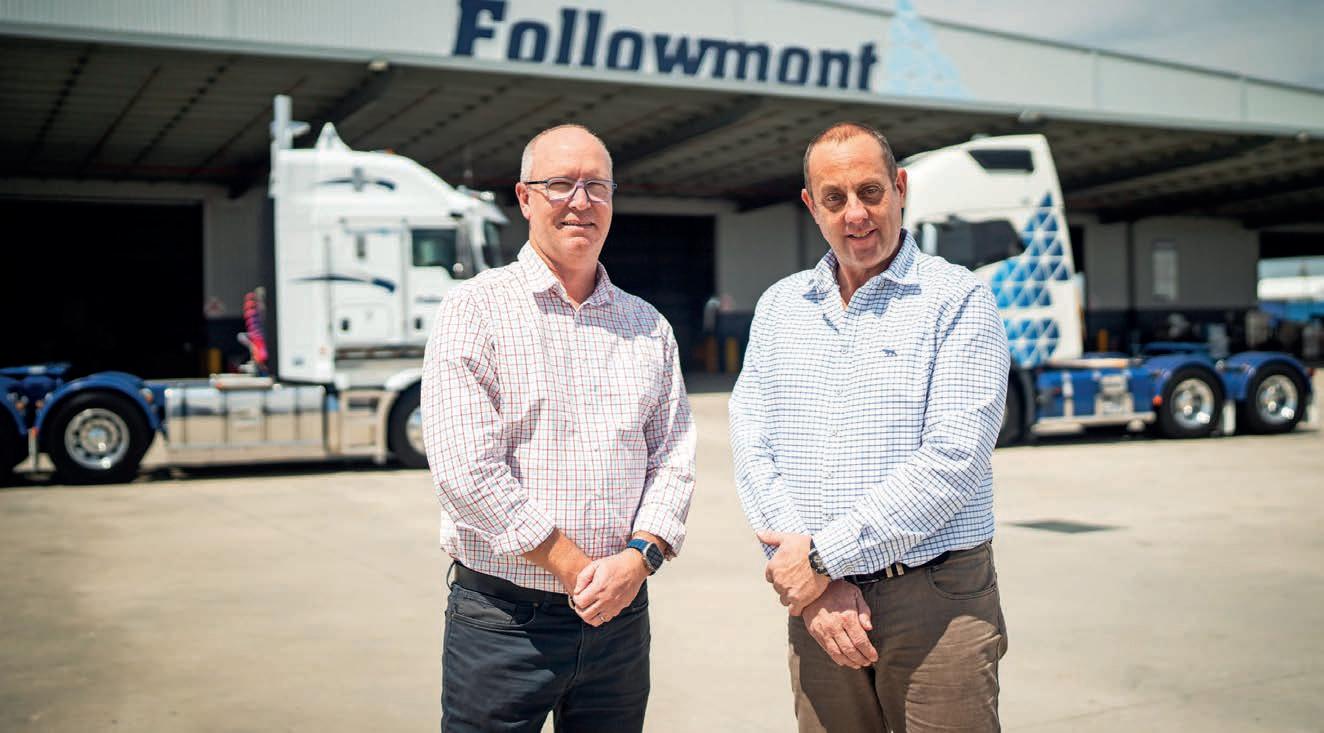

Followmont Transport has announced a significant milestone in its leadership team.
After 12 years of remarkable service as CEO and Managing Director, Mark Tobin will transition into the role of Managing Director.
Followmont Transport COO, Ross Longmire, will step up as the new CEO, bringing his operational expertise and passion for excellence to the role.
This exciting move marks a pivotal moment in Followmont’s history, reinforcing the company’s commitment to growth, innovation and delivering exceptional service to its customers.
“Our customers and team members remain at the heart of everything we do, and I look forward to steering Followmont as we continue to go from strength to strength,” Tobin said.
Under Tobin’s leadership, Followmont has solidified its position as a trusted and values-driven family business.
He has guided the company through significant growth and key milestones including investments in sustainability,
training and development and safety initiatives, all while maintaining the highest levels of service excellence.
In his role as Managing Director, Tobin will continue to focus on driving Followmont’s strategic evolution.
This will include innovation, mergers and acquisitions, embracing cutting-edge technology and enhancing the customer experience – all while ensuring that the company remains true to its familyoriented values.
Longmire has an extensive and successful career in transport and is highly regarded by Tobin as one of the ‘most skilled operational leaders’ he has encountered.
Tobin said he is the “ideal choice to lead Followmont”.
“His steady, thoughtful approach and deep care for our people will ensure we remain a company that values family and quality in everything we do,” he said.
“This decision has been years in the making and something that we have not taken lightly.
“I identified Ross for the CEO role and have been working alongside him and planning for this transition.”
Longmire brings over 25 years’ industry experience to the role, holding primarily operational management positions overseeing transport and logistics requirements in a number of different states and business units.
“From the moment I walked through the doors, I knew this was an incredible workplace,” he said.
“The sense of community and genuine care here is unmatched, and I am committed to preserving and strengthening that as CEO.
“I want to focus on maintaining the supportive environment where employees care for one another and strive to succeed together.”
According to Followmont, the exceptional working relationship between Tobin and Longmire – built on mutual respect and shared goals – ensures a seamless leadership transition.
Qube has appointed John Bevan to its Board of Directors, effective 1 January 2025.
Bevan brings extensive executive and non-executive experience to the Board.
He has held a variety of executive and senior management positions over a more than 25-year career with BOC Group in
Australia, Asia and the United Kingdom.
He also previously served as CEO and Executive Director of Alumina Limited, as well a non-executive Director of Alumina Limited, BlueScope Steel, Nuplex Industries and Ansell.
Qube Chairman, Allan Davies, welcomed Bevan to the Board.
“I am very pleased that John has accepted our invitation to join the Qube Board and I have every confidence that his extensive experience, industry knowledge and proven track record in variety of executive and non-executive roles will equip him well to make a strong contribution to the future growth and success of Qube,” he said.

The new CEO of South Australian express parcel and logistics company, Cochrane’s Transport, has been named.
Following his five-year tenure as Victorian Transport Association (VTA) President, Mike Lean has commenced his
new role at the transport company.
“I am pleased to announce that I am now the Chief Executive Officer of Cochrane’s Transport in Adelaide,” he said in a statement online.
In delivering his fifth and final VTA
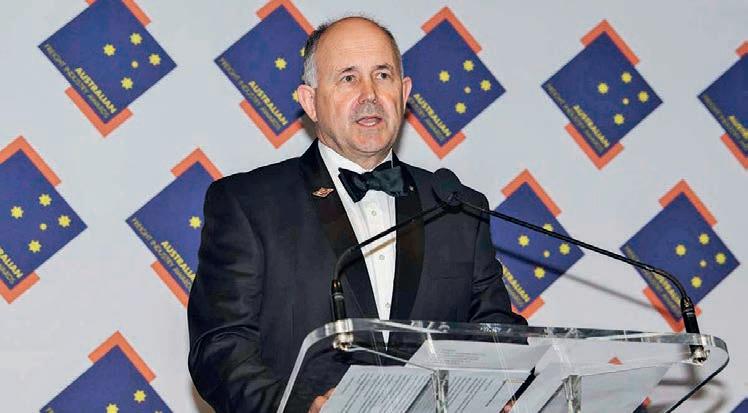
President’s Report at the end of last year, Lean emphasised that the association was in great shape financially, operationally and reputationally.
He cited training, industry support through the pandemic, industry pivots towards decarbonisation, state and federal stakeholder engagement and regulatory reforms as key highlights over his presidency.
“I’d like to thank Mike on behalf of the Council, Secretariat, and broader VTA membership for his generous commitment of time and energy throughout his presidency, and for inspiring lasting strategic change that has set the Association up well for many years of success,” said VTA CEO, Peter Anderson.
The VTA has since elected Vice President and founder of Ryan’s Transport Leongatha, Dennis Ryan, as its new President.



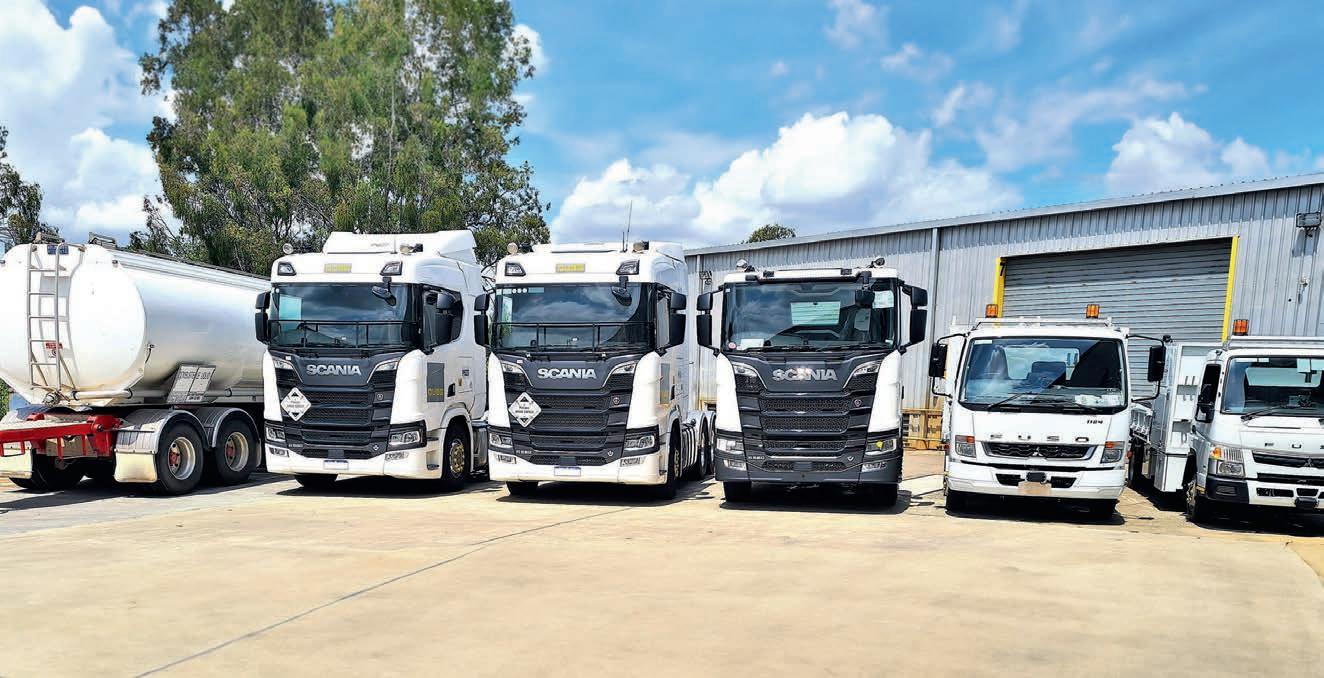











The South Australian Government has announced that it will be bringing significant changes to the state’s heavy vehicle licensing system.
Following a community-driven petition calling for stricter licensing requirements, two state-based initiatives aimed at improving heavy vehicle driver competency have been tabled in State Parliament.
The SA Government will establish an ongoing Multi-Combination (MC) Licence Program which will allow drivers to participate in a structured learning scheme with the support of their employer.
Drivers will need to apply for the program with the support of their employer before being issued a learner’s permit for the MC class.
Following this, they will then be required to complete a competency-based training course through an approved Registered Training Organisation before logging a minimum number of training hours and learning components with a qualified supervising driver.
Heavy Rigid (HR) licence holders will be
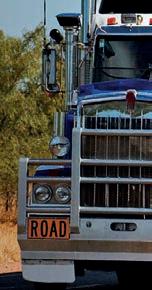
required to complete a minimum of 60 hours of logged supervised driving and additional learning components, while those with an existing Heavy Combination (HC) licence will need to complete at least 50 hours.
A practical driving assessment in an MC vehicle with an Authorised Examiner will then be required to obtain the MC licence.
According to SA Minister for Infrastructure and Transport, Tom Koutsantonis, this petition is imperative for driver safety.
“Everyone has the right to go to work and return home safely,” he said.
“South Australia is committed to building a safer, stronger road transport industry that prioritises the lives of everyone on our roads.
“This is a critical step ensuring that those behind the wheel of the heaviest and most complex vehicles on our roads have the necessary training and experience to drive them safely.
“The reforms ensure drivers meet the highest standards of competency while providing clearer pathways for achieving the required qualifications.”
The program will provide drivers a clear and efficient pathway for achieving the required qualifications without compromising on road safety or driver training requirements.
Drivers may still choose the traditional route of holding a HC or HR licence for 12 months before progressing to a MC licence. Mugridge expressed her happiness with the adoption of her petition’s changes.
“I am very pleased to see the State Government adopt these changes, which should help save lives,” she said.
Additionally, SA will no longer recognise overseas heavy vehicle driving experience towards obtaining a MC licence from early next year (except for drivers from New Zealand) in a further measure to improve road safety.
Drivers from other countries will be required to hold a SA HR or HC licence for a minimum of 12 months, or complete the newly established MC licence program before progressing to a MC licence. Both measures will take effect late this month.
Transport Women Australia Limited (TWAL) has restructured its Board with the appointments of four new Directors.
At its 2024 Annual General Meeting (AGM), the organisation announced that Loretta Hartley of Toowoomba, Queensland, Claudia Foini and Ainsleigh Thomas of Sydney, New South Wales, and Katrina Burns of Melbourne, Victoria, would be joining the Board as Directors.
They join the existing TWAL team of Chair, Jacquelene Brotherton, Vice Chair and Company Secretary, Coralie Chapman, and fellow Directors Di Caldwell-Smith, Penne Murphy and Kat Attana.
“These four directors will join with the five current directors to form the largest Board to
have taken command of Transport Women Australia Limited,” Brotherton said.
“They will allow the organisation to continue its growth and produce further projects and initiatives to add ongoing value to present and future members.”
Hartley has been in the transport insurance industry for approximately 12 years and is a long-term member of the TWAL team. She is currently a member of the TWAL Social Media Subcommittee and has been recognised by the TWAL Dream Maker Award among other industry achievements.
Currently the NSW State Manager of Doble Express Transport, Foini has 22 years of experience in the transport industry
and brings a wealth of knowledge to the TWAL team.
Thomas is the current NSW/ACT State Linehaul Manager at StarTrack. She was a recipient of the 2023 TWAL Driving the Difference scholarship, the inaugural TWAL 2024 Young Gunnette Award winner and a 2024 Road Freight NSW Emerging Leader finalist. She is also currently a member of the TWAL Social Media Subcommittee.
Burns has been in the transport and logistics industry for 12 years having roles with the likes of Wickham Freight Lines, SCT Group, Bass Strait Transport and IXOM. She was named as the Victorian Transport Association Young Achiever of the Year at the 2018 Australian Freight Industry Awards.
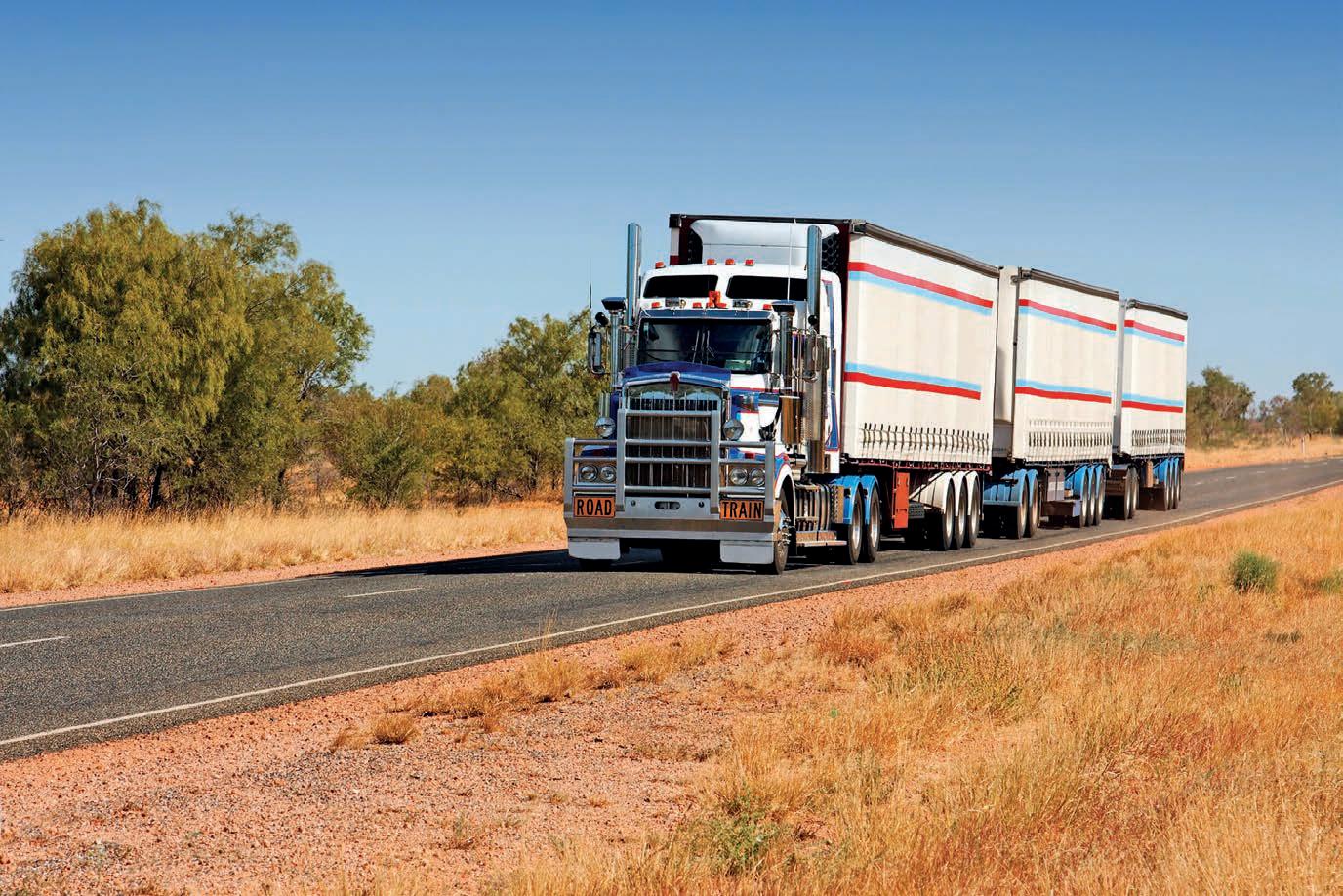
The Federal Government and the National Heavy Vehicle Regulator (NHVR) have announced $4.2 million will be dedicated to industry-led road safety projects via round 10 of the Heavy Vehicle Safety Initiative (HVSI).
The HVSI, which has more than $41 million in Federal Government funding to support 169 projects across its first nine rounds, aims to support projects that increase compliance and deliver safety benefits for the transport and logistics sector.
In light of last year’s road toll, Federal Assistant Minister for Regional Development, Anthony Chisholm, stressed the importance of the HVSI’s work and is urging for new safety
projects to be submitted.
“Australia’s road toll is far too high, with 2024 on track to be one of the deadliest years on our roads,” he said.
“It’s critical we continue to support safety projects that aim to make a real difference on our roads and are led by industry, for industry.”
Project submissions for round 10 of the HVSI need to directly address at least one of three themes – safer drivers, safer vehicles or safer road users.
Businesses or associations involved in the heavy vehicle industry looking to address a safety gap or issue are encouraged to apply for the grants program.
According to NHVR CEO, Sal
Petroccitto, this opportunity is available to any business or association within the industry.
“This is an opportunity for all groups and individuals involved in the heavy vehicle industry or across the wider supply chain that have a project, program, or campaign that will increase compliance and promote safety on our roads, to apply for this game-changing grants program,” he said.
“I am looking forward to seeing what round 10 brings, so we can continue to deliver improved safety outcomes not only for the heavy vehicle industry, but for all road users.”
Submissions are open and will close on 17 February.

The National Heavy Vehicle Regulator has released its new Heavy Vehicle Productivity Plan (HVPP).
Focused on challenges affecting the trucking landscape into the future, the HVPP 2025-2030 outlines how the NHVR aims to deliver safe, productive and sustainable heavy vehicle movements that enhance community liveability, drive Australia’s economy and support a resilient supply chain.
It defines contemporary challenges for Australia’s heavy vehicle industry including issues such as growth in the freight task, road fatalities, environmental and health impacts, the shift from asset management to optimisation and the increased frequency of unplanned supply chain disruptions.
It also outlines the NHVR’s plans to address these challenges and will be
supported by an annual implementation plan, to provide more specific detail on yearly actions and priorities.
“The new HVPP represents a modern take on heavy vehicle productivity; reflecting the NHVR and partners’ attitude that it has the potential to save lives, reduce carbon emissions and prolong the life of our roads and structures,” the NHVR said in a statement online.
The Australian and New South Wales Governments are investing $40 million to upgrade key intersections in Gilgandra to make them safer for heavy vehicle drivers and locals.
Four existing intersections on Hargraves Lane and Federation Street which intersect with the Newell, Oxley and Castlereagh highways will be upgraded to increase freight productivity, reduce travel delays and improve safety.
The Australian Government is contributing $32 million towards the project, with the NSW Government contributing the remaining $8 million.
The upgrades will be designed to open up bypass access for all heavy vehicles and reduce the number of heavy vehicles passing through the Gilgandra CBD.
“These intersection upgrades will be really significant for both Gilgandra locals and the truckies who transport goods through and around the town,” said Federal Minister for Infrastructure, Transport, Regional Development and Local Government, Catherine King.
“We’re proud to partner with the NSW
Government on strategic investments like this that make our roads safer and more efficient.”
Some larger heavy vehicles are currently unable to use Gilgandra’s heavy vehicle bypass because these intersections can’t be safely navigated – meaning some of the biggest and heaviest vehicles need to travel along the Castlereagh Highway (Miller Street) through the town centre.
The NSW Government has carried out preliminary investigations to determine the requirements for each of the key intersections and is currently
consulting with Gilgandra Shire Council and other key stakeholders to refine the proposed improvements.
“This $40 million investment demonstrates our government’s commitment to improving the safety and efficiency of our roads,” said NSW Senator Deborah O’Neill.
“These upgrades will improve traffic flow and road safety, as well as deliver long-term benefits to residents and businesses alike.”
A Review of Environmental Factors (REF) and concept designs for the proposed intersection upgrades are expected to be placed on display for public feedback by late 2025.
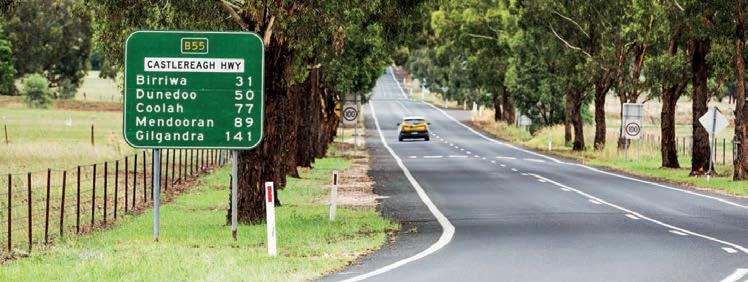
Riordan Grain Services and GeelongPort have signed a four-year lease agreement for a 3,000-square-metre shed on Corio Quay Precinct.
The on-site storage capacity is expected to improve grain exporting efficiency and provide more options for grain marketing.
Riordan Grain Services has worked well with GeelongPort over the last five years to build an export program for wheat, barley and canola from Victoria to
markets including Japan, South America, New Zealand, the Philippines and Southeast Asia.
Since its first shipment in 2018 using a mobile bulk loading system, Riordan Grain Services has built up to an annual export program of close to one million tonnes of grain in 2024.
grain growers more choices for grain marketing.”
GeelongPort is a premier Victorian bulk port providing easy access to logistics routes for Geelong and south-west of the state’s supply chains.
GeelongPort CEO, Brett Winter, said the Port was proud of its longstanding relationship with the prominent local family-owned business.
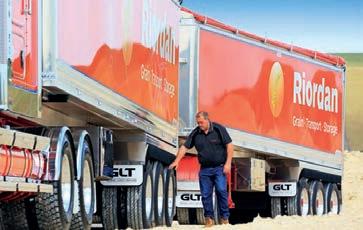


Riordan Grain Services Managing Director, Jim Riordan, said he was very pleased to secure the lease for the shed as it will provide critical capacity for the sophisticated logistics involved in export grain shipments.
“We have experienced growth in our business for more than 25 years, and this agreement with GeelongPort means that we can be more confident in making plans,” he said.
“This is a significant addition to our business that will also support jobs in Geelong and provide Victorian
“The benefits of Riordan’s operations on the state and economy are farreaching, particularly in regional communities throughout Victoria, and GeelongPort is proud to be an important link in this incredible supply chain,” he said.
“By working together in a collaborative way, Riordan and GeelongPort have tackled a competitive market with an innovative and different approach to exporting grain.”
Although new heavy vehicle registrations have experienced a slight drop in the last year, they remain strong as demonstrated in ARTSA-i’s latest report.
After three years of considerable growth, total new heavy vehicle registrations saw a small reversal of -0.6 per cent in 2024 compared with the 2023 calendar year.
Heavy rigids recorded three per cent growth whereas all other categories of

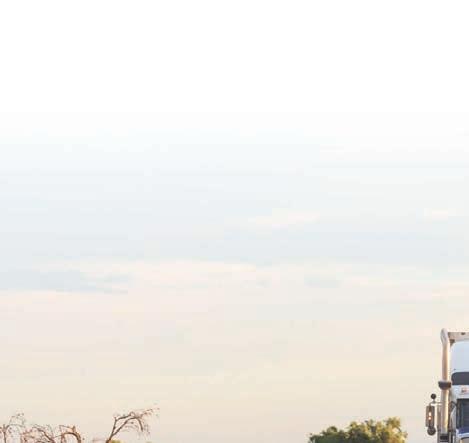
medium rigid, prime movers and trailers recorded small negative percentage results of around two to five per cent for the calendar year compared with the previous year.
ARTSA-i’s report also shows that the total annual new registrations across these four heavy vehicle categories have grown by close to 50 per cent since the 2020 year.
ARTSA-i Executive Director, Rob Perkins,
is optimistic about the results which follow a “huge year on year run” over the last four years.
“To have a small 0.6 per cent drop in 2024 compared to the previous record year for new registrations should be taken in context,” he said.
“It is still the second highest new vehicle registration figure since ARTSA-i commenced collating this data in 2014.”

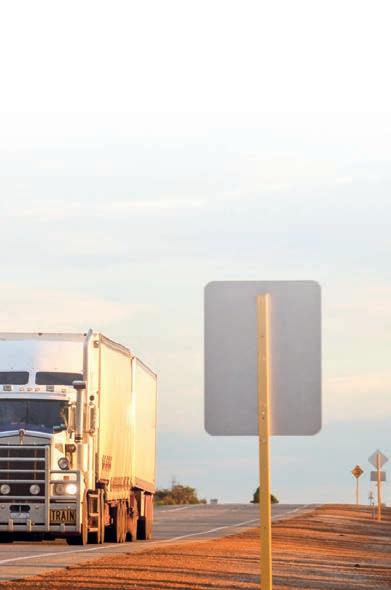

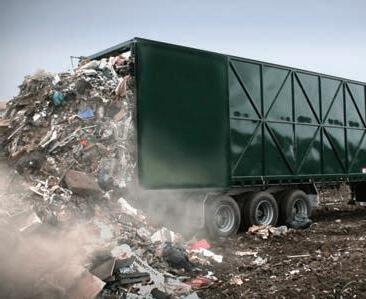



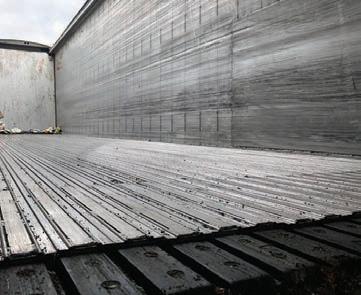


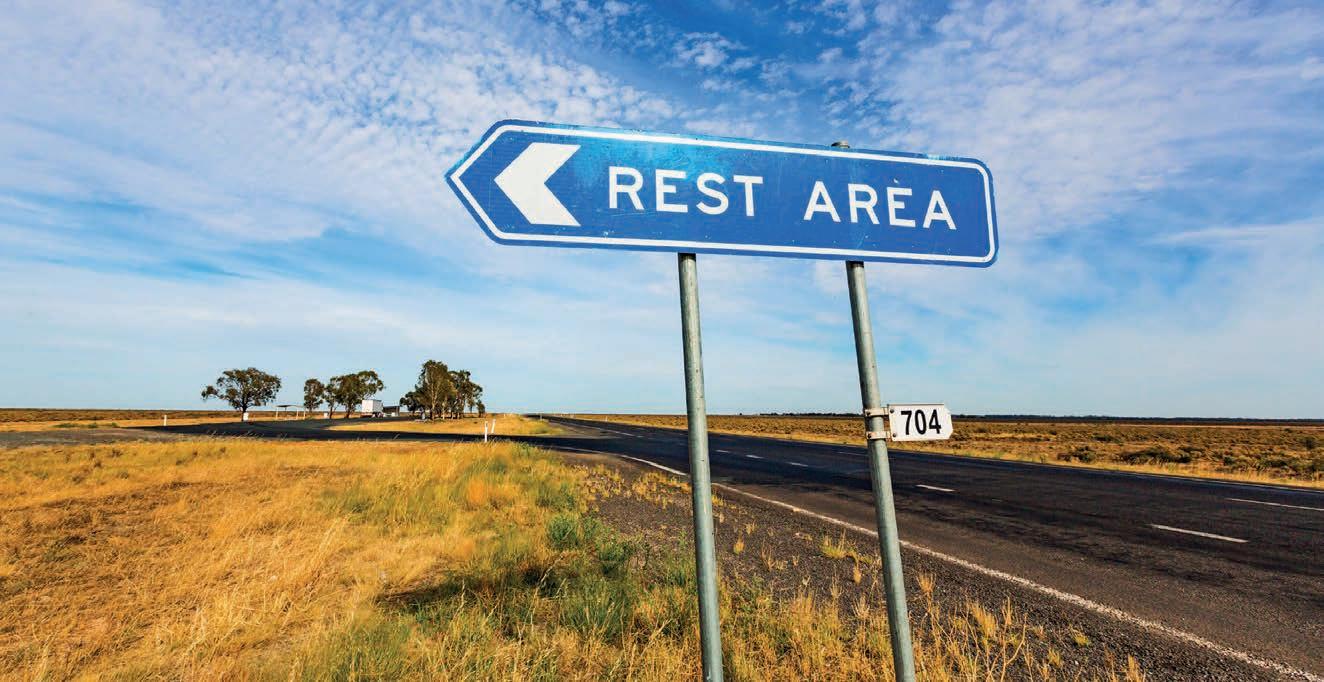

The Australian Government is continuing to improve road safety for truck drivers and other travellers across the country, with six new projects announced under the fourth tranche of the Heavy Vehicle Rest Area (HVRA) initiative.
The projects are part of a $17.4 million joint investment between the Federal and state, territory and local governments, with the Australian Government contributing $9.7 million.
Overall, the HVRA initiative provides $140 million in Federal Government funding over 10 years for the construction of new and upgraded heavy vehicle rest areas.
The initiative aims to improve road safety for heavy vehicle drivers and other road users through addressing the shortage of heavy vehicle rest stops in locations of need.
Projects funded through tranche four include the construction of new rest areas with facilities such as toilets and picnic areas, resurfacing, line-marking and bitumen sealing. The funded projects are:
• Maranoa Shire Council (Queensland)
– Asphalt surfacing of existing heavy vehicle truck stop area at the Roma Truck Stop precinct.
• Queensland – Design and construction of a new heavy vehicle rest area at Homestead West on Flinders Highway.
• Narromine Shire Council (New South Wales) – Upgrade to the heavy vehicle rest area at Tomingley.
• New South Wales – Upgrade to Ravensworth Eastbound and Westbound rest areas on Sturt Hwy, Maude.
• Yarriambiack Shire Council (Victoria) –Upgrade to nine existing truck parking
locations in the Yarriambiack Shire.
• South Australia – Stuart Highway Rest Area Upgrade at Arcoona and a new heavy vehicle rest area at Pimba.
“These projects are another example of the Australian Government’s commitment to driver safety and supporting the road transport industry,” said Heavy Vehicle Rest Area Steering Committee Chair, Senator Glenn Sterle.
“I am very proud that the Heavy Vehicle Rest Area initiative is boosting heavy vehicle user safety and productivity through new and upgraded rest areas.
“We are steadfast in our commitment to keeping our freight operators and communities safe.
“These new and upgraded rest stops will help truckies manage their fatigue as they work hard keeping our country moving.”
The Victorian Transport Association (VTA) has announced that registrations are now open for the VTA State Conference 2025.
Being held from 23-25 March at Silverwater Resort in Phillip Island, the State Conference is a major event in the VTA’s calendar.
The conference unites key industry figures to discuss challenges and opportunities faced by the transport and logistics sector.
This year’s theme – Safety First: Empowering People, Boosting Productivity, Shaping Transport’s Future – provides a valuable opportunity for industry leaders
to have crucial conversations regarding safety both on the road for drivers and off the road for operators behind the scenes.
According to VTA CEO, Peter Anderson, this theme speaks to the values which underpin the association itself.
“This year’s conference theme underscores the VTA’s ongoing commitment to prioritising safety, fostering workforce empowerment and driving innovation in the transport and logistics sector,” he said.
“This year, we’re focusing on safety and productivity, which are critical to ensuring the long-term success of the
transport sector.”
This year’s conference boasts an itinerary full of plenary sessions, panel discussions and networking opportunities.
Expert insights and trade exhibitions will highlight cutting edge products and services in the world of transport safety.
Anderson places great emphasis on the conference’s role in brokering solutions for the transport and logistics sector.
“This conference isn’t just about listening to speakers,” he said.
“It’s about engaging with the people and solutions that are shaping the future of our industry.”

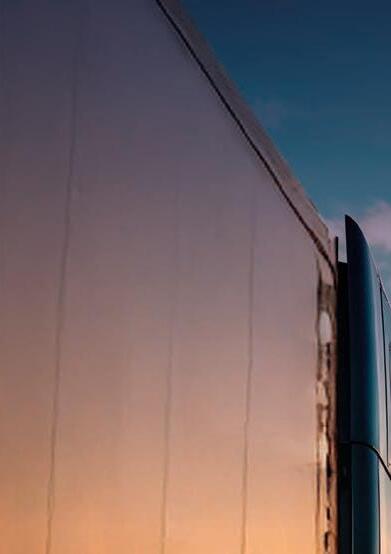
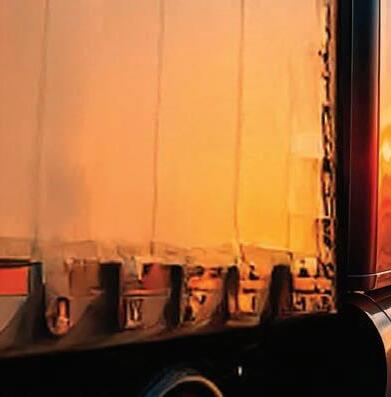










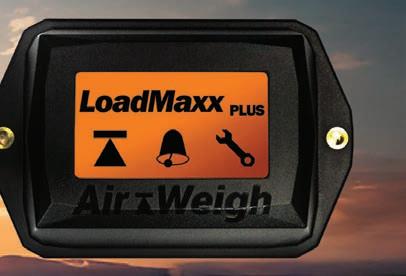

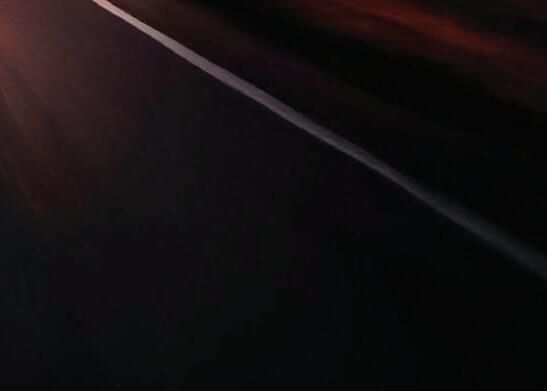






The Victorian Government’s recently announced Economic Growth Statement has laid out a new and comprehensive plan to bolster the state’s economy.
Victoria has long enjoyed its status as a cultural hub for Australia, hosting an array of internationally regarded events which have brought revenue to the state, its local businesses and investments.
While the 2023-24 period was a big year for these events – the state spent $39 billion on tourism which was supported by Melbourne’s hosting of the Australian Open, the Formula 1 Grand Prix and Taylor Swift’s Eras Tour concert – Victoria has continued to feel extreme economic pressures from years of decline.
Additionally, despite the State Government also reporting strong economic statistics over the last few years such as a Gross State Product (GSP) increase of 1.5 per cent in 2023-24, real-term economic growth of 11 per cent in 2023-24 compared to 2018-2019 (preCOVID), a state export valuation of $69.4 billion (up 17 per cent from the previous year) and more – it is facing levels of debt which are putting considerable pressure on its aforementioned local businesses and investments.
A report published by the Australian Financial Review (AFR) last November shared that multiple business groups have warned of Victoria needing a Commonwealth bailout if certain economic trends continue, predicting a large $228 billion debt for Victoria by 2028 under its current economic plan. Additionally, the state’s credit rating, which has been double downgraded since 2020, is reportedly at risk of falling further.
According to Australian Industry Group Chief Executive, Innes Willox, these predictions will exacerbate an already difficult economic environment for local businesses if the state’s economic plan doesn’t change.
“Victoria already has given itself a reputation as a notoriously difficult and unattractive place to invest and do business with,” he told AFR. “High taxes, charges and levies, project cost overruns, uncertainty over energy supply and ever-increasing regulations are making more and more businesses rethink possible investments and even their future in the state.”
These challenges for businesses and investments have been rightly acknowledged by the Victorian Government and key representatives, including former Victorian Treasurer and Minister for Economic Growth, Tim Pallas.
With that all being said, the Victorian Government’s new Economic Growth Statement seeks to remove regulatory and economic barriers for local businesses and investment through the implementation of four key actions – opening doors, cutting red tape, building new skills and reaching every community. This, it hopes, will stimulate the economies of five sectors labelled as priorities –advanced manufacturing and defence, health technologies and medical research, circular economy, digital technologies and agribusiness.
The Statement, according to Pallas, directly addresses key economic concerns held by both experts and the public.
“As we know, here and around the globe, inflation is hurting,” he said. “Interest rates are high and productivity is slowing.
And in a world where a strong and vibrant business sector is more important than ever – improvement is the only way forward.”
The following sectors have been selected under the Economic Statement for their essential roles in Victoria’s financial operations and innovation.
Victoria boasts a $39.2 billion manufacturing sector which supports more than 275,000 jobs and exports goods worth $11.2 billion. The innovative state of Victoria’s manufacturing market has yielded many advancements in construction and building which have enabled the cost-efficient delivery of infrastructure.
The highly skilled workforce in this space has allowed Victoria to secure opportunities from the Federal Government’s investment in manufacturing and defence, including through the AUKUS agreement between Australia, the United Kingdom and the United States.
Continued defence investment in Victoria will accelerate advanced technologies and innovation which has benefits across many areas like renewables, transport and advanced air mobility.
Health technologies act as a crucial sector of Victoria’s economy. The state hosts 40 per cent of ASX-listed medical technology and pharmaceutical companies – alongside world-renowned universities and institutes. Victorian firms produce 54 per cent of Australia’s pharmaceutical exports, fuelling economic growth for the state and
delivering improved health outcomes for the country.
Victoria is the only place in the world where two mRNA leaders, Moderna and BioNTech, both operate major hubs in the same state. It is also a national hub for clinical trials, testing advanced health technologies against an array of diseases. The centralisation of research, testing and production puts the state in a unique position to grow the sector further.
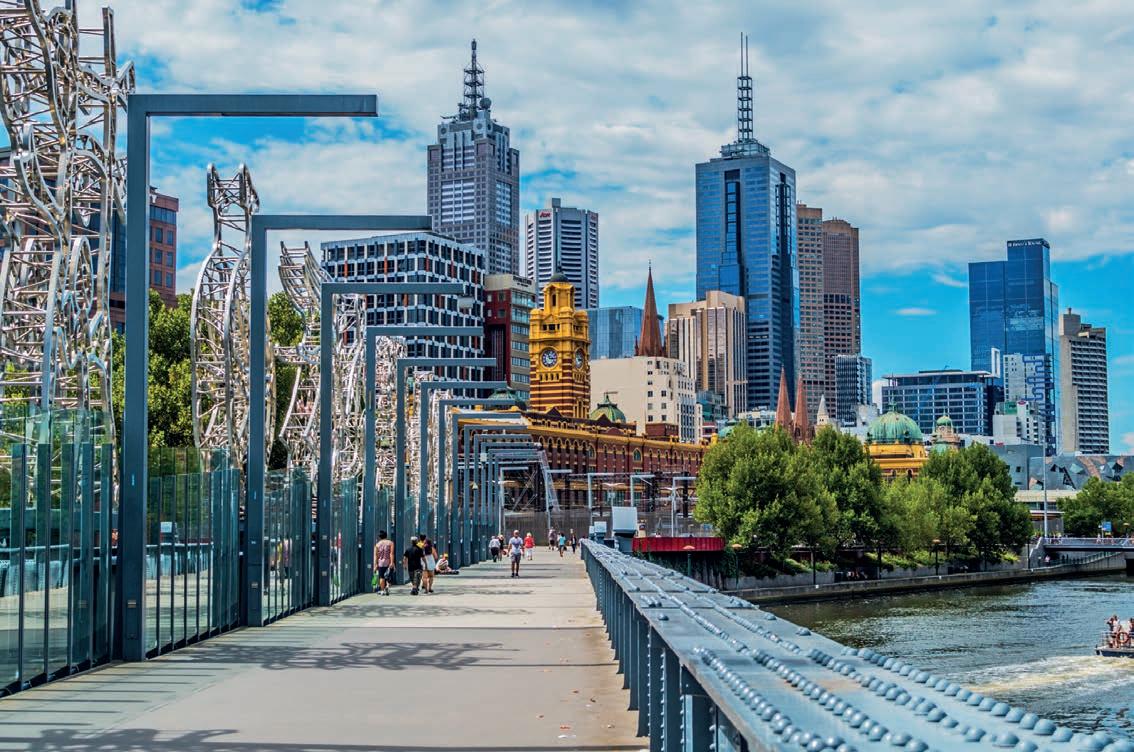

Victoria’s focus is to attract global industry and investment for research and development, product development, manufacturing and commercialisation in the state.
Victoria is taking steps to achieve a level of low carbon production in alignment with growing climate change concerns and emissions reduction targets.
The significant national funding available for the energy transition, including the $22.7 billion Future Made in Australia Plan and the $15 billion National Reconstruction Fund, creates strong opportunities for Victorian businesses to join national renewable energy supply chains.
Developing Victoria’s circular economy is essential to future-proofing the state as many market decarbonise, and critical mineral processing and battery production will be a focus for this. Victoria’s critical minerals endowments provide extraction and downstream processing opportunities, including energy storage product design, production and recycling for local and export markets.
The Victorian Government’s establishment of Resources Victoria
will contribute to the state’s sustainable minerals development and create a roadmap to support this new industry. This roadmap will include a strategy to attract minerals development and investors from around the world into the state while maintaining strong environmental standards and empowering local communities through greater consultation.
Victoria’s digital technologies sector contributed $35.6 billion to the state’s economy in 2023 and employs 30 per cent of the national digital technology workforce. Many of its highly regarded universities have found research capabilities and niches within various digital technologies, but the state still aims to achieve further commercialisation, research into artificial intelligence (AI), machine learning and quantum technology applications.
According to the Victorian Government, Victoria is reportedly ranked number one in Australia for total agribusiness exports, which account for nearly half of the state’s total goods exports and is valued at
over $15 billion annually. Additionally, it offers advanced research and innovation towards food safety, quality produce and technology.
Victoria plans to amplify this sector by growing value-added food production and manufacturing and supplying new and existing export markets with new products to create more opportunities for agribusinesses to innovate and commercialise.
Through a raft of initiatives, the effects of the Economic Growth Statement’s four actions when applied to each of these priorities aims to stimulate the state’s overall economy and make it more accessible for business operators and investors. These objectives include:
1. Open doors: backing businesses to invest, expand and
This first action set by Victorian’s Economic Growth Statement has been developed with the explicit intention of attracting new investment and creating new opportunities for businesses. This action will be supported by a myriad
of initiatives designed by the Victorian Government which aim to tackle financial and regulatory restrictions in the state’s commercial space. Many of these will increase the amount of operable land, trade opportunities and more.
One of the actions includes the creation of the Victorian Industry Development Fund which will contribute $20 million across the Statement’s five priority sectors. Through this fund money, eligible businesses in these sectors will reportedly be able to enjoy steady financial support and high growth potential both through grants and partnerships with commercial lenders to establish a loan facility for innovative Victorian start-ups and scale-ups. The fund will open in the middle of this year.
Another initiative the Victorian Government wishes to implement is a 10-year plan to unlock industrial land to provide business with more room and certainty to grow and plan long-term operations. The State Government will effect this initiative across many areas.
The urban planning of the Merrifield North precinct will be brought forward by five years, with a new scheduled completion year of 2028. This project comprises over 900 hectares of land and has the capacity to create 4,700 jobs. Altona North and Hastings will also be the subject of zoning review – 3,300 hectares will be assessed for potential business development.
Additionally, the state’s new greenfield land concierge service will work with various councils and industry to unlock land identified for industry and employment that is currently underutilised, identifying and addressing issues preventing development.
Other actions under this initiative range from financial to administrative, including the boosting of small and medium enterprises with a $10.9 million package and the establishment of different programs which aim to bolster global partnerships
with local universities and TAFE programs, provide business education for local operators, work to lay foundation for Victoria as a venture capital hub and more.
2. Cut red tape: making it simpler to do business in Victoria
The implementation of this second action in Victoria’s Economic Growth Statement aims to both change and remove existing regulation which causes unnecessary and complicated administration for businesses and investments operating in the state. The removal of these processes plans to help businesses solely focus on growing and innovating.
Specific initiatives to achieve this action’s implementation include halving the number of business regulators in Victoria by 2030 (from 37 to 18) as well as using digitisation and AI to accelerate some government processes, removing the need for a planning permit for outdoor dining on public land and more.
Another particular initiative involves speeding up the assessment of the Environmental Effects Statement (EES) for businesses. The EES determines an operation’s potential environmental impact on a proposed development and in the past has held up many business plans through bureaucratic inefficiency.
Victoria’s Economic Growth Statement pledges to deliver these assessments in a new time frame of 18 months or less.
3. Build new skills: ensuring a workforce that’s ready to go
The third action in Victoria’s Economic Growth Statement seeks to add onto the progress achieved by existing programs which aid the development of builders and tradespeople, such as Free TAFE, the state’s Big Build Apprenticeships and the Major Project Skills Guarantee.
Initiatives for this action include more
investments into education, training and upskilling. Construction centres like the Future of Housing Construction Centre of Excellence at Melbourne Polytechnic will be funded, along with the inclusion of AI programs for work re-education in partnership with the Victorian TAFE network and other schemes.
This action also has dedicated initiatives to ensuring the development of vocational skills among the Indigenous community. Victoria wants to help more Aboriginal businesses compete locally and globally through programs like the hosting of the World Indigenous Business Forum in 2025 and the creation of the First Peoples Leadership Academy.
4. Reach every community: a strong Victoria underpinned by a strong regional Victoria
The final action in Victoria’s Economic Growth Statement looks to develop infrastructure and investment across regional Victoria to provide these areas with more commercial opportunities.
Many of the initiatives involved with this action will enhance regional industries. In addition to the delivery of simpler regulation for businesses, these include providing $10 million to unlock trunk infrastructure in Victoria, developing agricultural applications of mRNA technology with new funding for research and manufacturing, boosting tourism marketing through a cooperative fund and more.
Victoria’s Economic Growth Statement outlines an ambitious plan to strengthen the state’s economy following a sustained period of financial depression. The Statement’s four actions, to be applied across the five priority sectors, will work to bolster the economy through an increase in international investments and local business operators.

Trimboli Services has deployed four new Trout River Live Bottom trailers from Freighter Group into its asphalt and quarry operations for construction material company, Boral.
Trimboli Services is a family-owned civil construction company based in South Australia which has been operating for 20 years since it was started by Director, Matthew Trimboli, who has been leading its navigation through the transport industry ever since.
Running a fleet of 13 combinations from Freighter Group consisting of Trout River Live Bottom and Hamelex White trailers, Trimboli Services’ primary freight task is carting asphalt and quarry materials for Boral. While this typically sees the business doing asphalt replenishment at four of Boral’s asphalt and concrete plants throughout SA and transporting rubble to its various quarry sites, each day is very different to the other according to Matthew.
“We could be anywhere from one day to the next,” he says. “We could be running from a Gepps Cross asphalt plant to Port Augusta, doing jobs in Victor Harbour, Lochiel or Pine Point and we could be on replenishment work from Maslin Beach down to Gepps Cross. Or, we could be running sand out of Golden Grove to a

concrete plant and then working locally for a council five kilometres up the road. We could be anywhere on a given day.”
According to Matthew, transport initially wasn’t a top priority for Trimboli Services. But, when the company began a full-time contract with Boral, it was clear that an extensive and dependable fleet would be required. So, he turned to Freighter Group to start building one.
Two decades down the track, Trimboli Services has accumulated 13 trailers from Freighter Group. Its latest additions, arriving just at the end of last year, are four Trout River Live Bottom trailers.
Measuring in at a length of 33’ each, they’re made up of a Hardox body with insulation on both sides, electric tarps and remote controls for tailgate operation (just to name a few) while also being packed with a range of inclusions designed to get the most out of their freight task. Running on Higher Mass Limits (HML), the trailers have a Gross Combination Mass (GCM) of 46 tonnes and a 29-tonne payload.
While Matthew says the Trout River trailers have been performing flawlessly
in every way, a standout feature has been their ability to retain the temperatures of the asphalt they’re carrying extremely well.
“Considering we’re carting anywhere from Adelaide to Port Augusta to Victor Harbor on some days, their insulation and retention of the asphalt’s heat has been really good,” he says. “It’s critical that you keep the heat in them and that you can maintain the temperature of the product until it comes out of the other end, especially when you’re dealing with asphalt. You want to maintain its heat as best you can.
“That being said, the Trout River trailers are fantastic. As far as reliability goes, we haven’t had any issues.”
Trimboli Services Transport Coordinator and driver, Glenn Bull, attests to this.


“I love them,” he says. “They drive beautifully. Their centre of gravity when loaded is great, and they track really well.”
For Glenn, their ease-of-use –particularly the remote-control operation of the tailgate – has made the job of unloading material seamless.

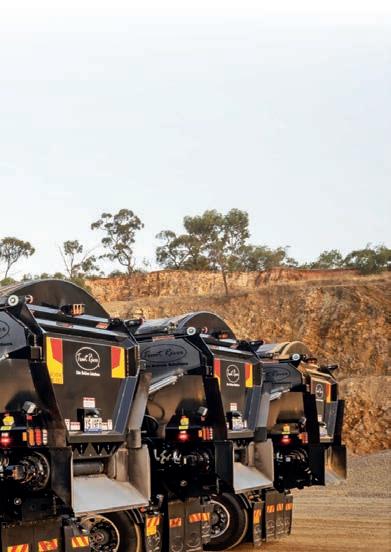



“They’re an easy setup,” he says. “When we go to do asphalt, I just hand the remote to the spotter and they already know what to do.
“Their simple operation is definitely a big factor, but everything is really easy to access as well. For example, you can easily get to the valves in the back to tighten them. So, they’ve been brilliant.
“The product speaks for itself, and I’m really happy with it.”
Due to the quality of these trailers, Trimboli Services has also been able to completely avoid downtime and delays. This and the reliability of Freighter Group’s service department has resulted in increased productivity for the business.
“The main thing you don’t want is downtime, and the more you can minimise it the better,” Matthew says. “We rotate our fleet every five to six years to try to minimise it that way. But we’ve also found that Freighter Group’s service department is quick to jump on things. They try and reduce as much downtime as possible.”
While these efficiency gains have been key, Trimboli Services has also benefitted from Freighter Group’s local presence. This was a big factor which led to its choice on the OEM for this recent application and the previous ones to begin with.
“They’re local which is convenient for us if we need anything,” Matthew says. “They’re basically 15 minutes up the road from our depot, so it’s really good for us in terms of servicing and maintenance.”
The other factor to Trimboli Services’ continued dealings with Freighter Group
has been the outstanding customer service received.
“Freighter Group is great to deal with and have always made the transaction easy,” Matthew says. “It’s a one-stop shop for us. We can go there and get whatever we need, and we know who we’re dealing with each time because it’s the same salespeople and the same service people. You just make the phone call and you get sorted out.”
Building on the quality which Trimboli Services receives with each unit is the extensive commitment to customer service which was clear to Matthew from day one. It’s what has kept him coming back for more.
“We bought our first lot from Freighter Group eight years ago, and we never had anything go wrong with them,” he says.
“Everything was so easy. We would just book our servicing in for all of the trailers and it would be done.
“We’ve had a great relationship with Freighter since then and I’m still dealing with the same people that I was eight years ago. When you deal with the same people regularly, they know your applications, your combinations, what you want and what you need, meaning everything is very simple.
“So, it’s the relationship you build which makes everything much easier. That, and the fact that the Freighter Group product is fantastic. It’s great value for money.”
Contact Freighter Group
Ph: 03 5339 0300
Web: www.freighter.com.au





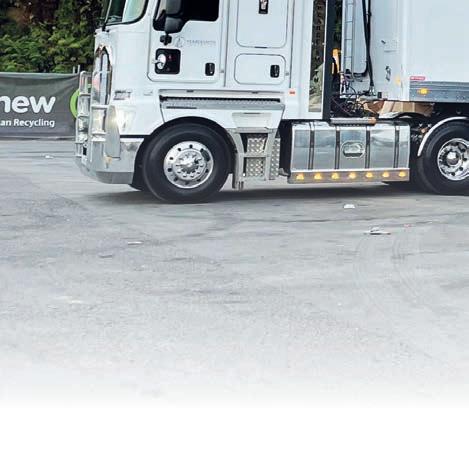
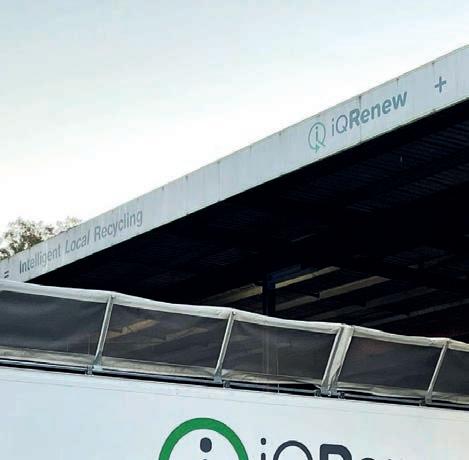
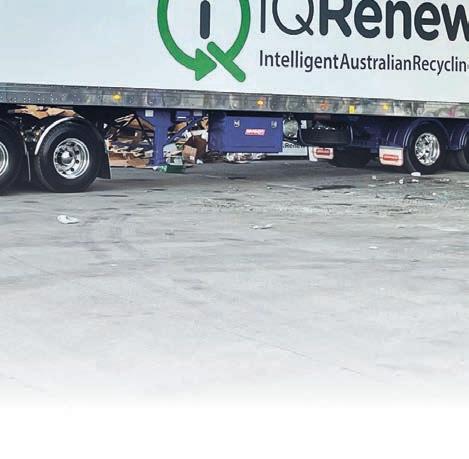
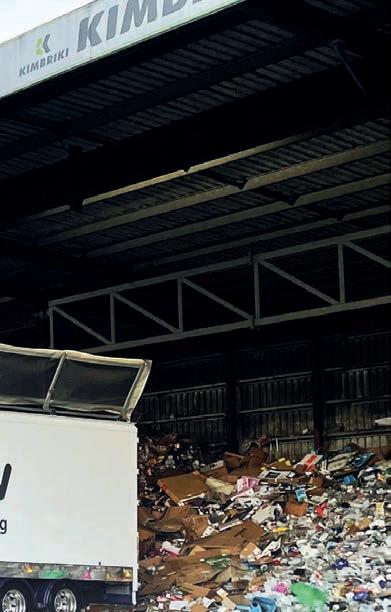

Recycling transport company, Pearce Smith Logistics, keeps the streets of New South Wales clean with the support of BPW Transpec equipment on its vehicles.
Pearce Smith Logistics was established by owner and Director, Justin Spencer, in 2020, and for nearly five years has been contracted by recycling company, iQRenew, to transport yellow-bin recycling material throughout Sydney, Newcastle, Tamworth, the Central Coast and the Mid North Coast. This material is carted from city bins to iQRenew’s location which works to separate and sort the recycled content before redistributing it for reuse.
Since entering the market, Pearce Smith Logistics’ transport capabilities have steadily grown. Having started with one Cargo Floor moving floor trailer from BPW Transpec, Justin was impressed by the versatile floor system which was able to move a wide variety of materials with ease. The company’s fleet now consists of six of these trailers, all dedicated to the express purpose of moving recycled material.
This growth has coincided with what Justin has observed as expansion within
the recycling industry, as participation increases along with greater capabilities by existing companies.
“I feel that recycling as an industry has really grown over the last five years,” he says. “You can attribute that to lots of return-to-earn schemes with glass, and iQRenew even has a partner company which is now looking to recycle plastics.
“A lot of people are taking these materials out of their red bins and are looking to recycle more. Our industry has grown off the back of these things, and we’re getting busy.”
Justin’s experience connecting his company’s first Cargo Floor trailer to his truck proved complicated. Needing assistance, he was referred to Scott Merriman of BPW Transpec for maintenance.
“I was referred to Scott for a technical issue, and within 24 hours BPW Transpec had me back on the road,” he says. “It wasn’t even their issue, but they were more than happy to supply me with
someone to help me get my truck and trailer back on the road.”
BPW Transpec, based in Laverton North, Victoria, has provided manufacturing solutions for road transport, mining and agricultural industries for more than 65 years. Justin’s positive experience with its customer service set the precedent for a strong partnership between the two companies.
This partnership sees BPW Transpec supplying Pearce Smith Logistics with various pieces of equipment for its Cargo Floor trailer fleet, which can become damaged and weathered over long periods of hauling recycled material around New South Wales.
“Because of the industry we’re in, our trailers can go through a fair bit of wear and tear,” Justin says. “We have forklifts that sometimes hit the trailer floors and heavy items in bins which cause damage when tipped out. The slats that move up and down the trailer floors can get damaged as well.”
In addition to the moving floors, Pearce Smith Logistics utilises BPW Transpec airbag suspensions, drum brakes, axles and piping systems on its trailers to ensure the fleet is operating to the highest standard possible. BPW Transpec provides and supports these premium products with durability in mind, giving Pearce Smith Logistics more use out of the supplied equipment.
“The strength and durability of BPW Transpec’s parts are perfect for my trailers’ journeys,” Justin says.
In addition to the provision of highquality equipment, Pearce Smith Logistics has greatly benefited from BPW Transpec’s customer service standard. Justin has not only enjoyed this type of service as a customer himself but has also sought to incorporate it into his own business.
“One of the things I have learned


from operating as a small business is that customer service is key,” he says.
“But a much larger organisation carrying itself with such a focus for the individual customer is not something you see a lot.
“Seeing that from BPW Transpec really encourages me to hold myself to the same standard.”
As the partnership between Pearce Smith Logistics and BPW Transpec enters its fifth year, Justin is open to the possibility of expanding its scope to include more products and services in the future.
“I have a tipper truck and trailer as well, and I know that BPW Transpec is in the hydraulic brand game as well,” he says.
“As I look at expanding operations over the next few years, I will definitely look at continuing to use BPW’s products because of their durability.”
Steering the company towards a clear
brand identity and purpose, Justin wants to first prioritise the full establishment of his business’ operations before considering any other plans.
“I’ve expanded so much over the last four years, so I’ve been taking a deep breath for the last 12 months just to let things sit,” he says. “I want to help the business find its grassroots with the amount of equipment we have for now.”
BPW Transpec’s supply of top-grade transport equipment has greatly helped Pearce Smith Logistics to optimise its moving of recycled material across NSW, keeping the state’s streets clean and its yellow bins ready to be filled again.
Contact BPW Transpec
Ph: 03 9267 2444
Web: www.bpwtranspec.com.au

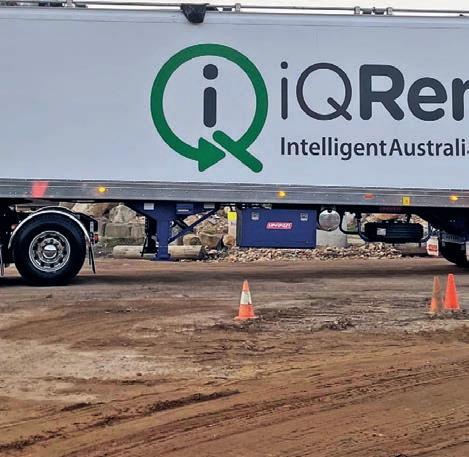

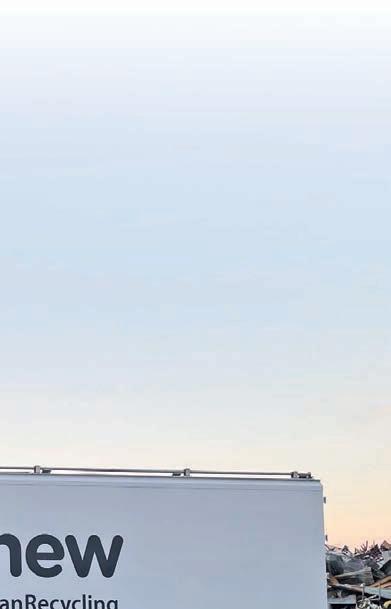

Giannopolous Transport’s latest application of a KEITH Walking Floor system has resulted in a series of benefits, most notably significantly reduced unloading times.
Giannopolous Transport has been servicing South Australia for over 50 years now. Specialising in the transport of scrap metal, waste, crushed pallets and recycled plastic bales since 1974, the family-owned business has grown as both a reputable and preferred transporter in the Adelaide and Wingfield regions of Australia specifically.
With second-generation Director, Con Giannopolous, at the helm, the company now operates a fleet of 45 trailers and close to 30 prime movers. And, always being on the lookout for new contracts while continuing to best-service the market, it’s constantly eyeing down new opportunities.
This foresight and proactive behaviour is what got Giannopolous Transport onto the renowned KEITH Walking Floor system which, in turn, has rewarded the business significantly. Con has been utilising the system for nine years now, and after winning a contract with Integrated Waste Services (IWS) in Wingfield four years ago, its presence within his fleet of trailers has enlarged even further.
One of Giannopolous Transport’s most recent applications of the KEITH Walking Floor system was on an aluminium chassis trailer from Titan Trailers which has since been deployed to transport five loads of waste, crushed pallets or recycled plastic bales a day. For Con, the KEITH Walking Floor system is the only way.
“The KEITH Walking Floor is killer,” he says. “You can feel the trailer pumping everything out like it’s nothing. It’s just unbelievable – the floor unloads the whole trailer in less than seven minutes.”
The moving floor, more specifically the V9 variant, is one which Con says seems to be able to handle whatever is thrown at it.
“No matter what we put in the trailer, it’s very quick at unloading,” he says. “There have been no issues at all. It’s great.
“The boys have a competition on who can unload the fastest, and no one can compete with the KEITH Walking Floor.”
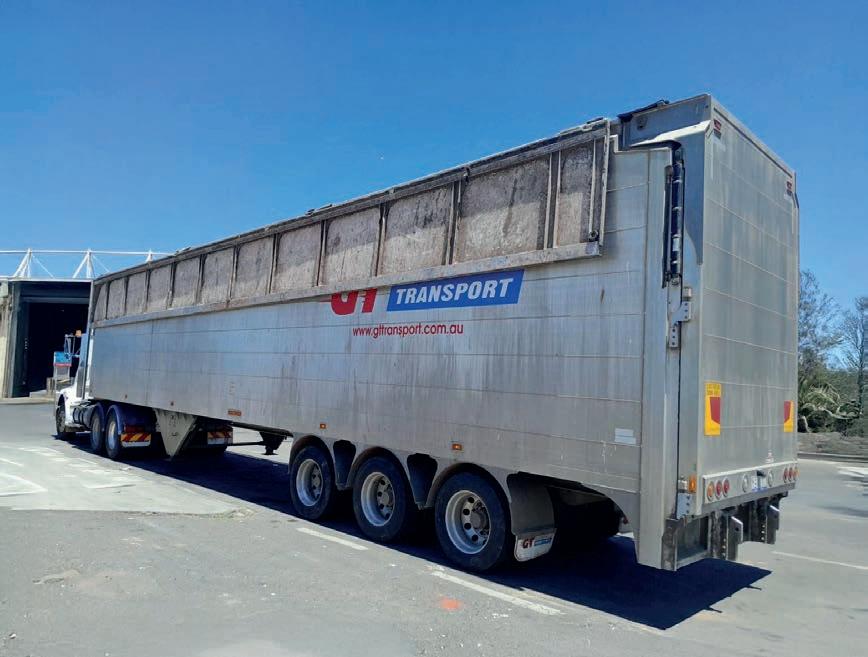
“The boys have a competition on who can unload the fastest, and no one can compete with the KEITH Walking Floor.”
When comparing the Titan trailer’s operation to units in the fleet without the KEITH Walking Floor system fitted, Con says it’s seamless.
“We’ve got contracts of carting crushed pallets between different sites, and when we put them in our other units they just jam,” he says. “So, we have to be careful about how we put them in those ones.
“But with the KEITH Walking Floor trailer, we load it and load it and it pumps it out like nothing.”
Following the success of his previous applications, Con recently completely refurbished one of his second-hand trailers with a new body, components
and another KEITH Walking Floor system. Increased productivity and efficiency via fast unloading and reduced downtime once again proved to be directly correlated.
Based on this, Con has decided on utilising the KEITH Walking Floor system for all future vehicles in his fleet.
“We haven’t had issues with the floors at all,” he says. “They’re perfect for our job.”
Contact
KEITH Walking Floor Australia
Ph: 0404 041 833
Web: www.keithwalkingfloor.com








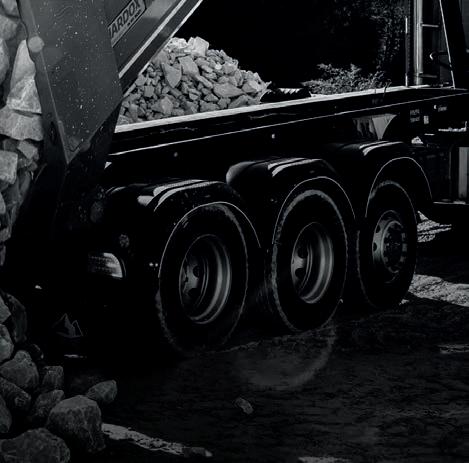




E-Max has moved into a brand-new facility which, double the size of its predecessor, is the key to setting the business up for the future.
As the arrival of 2025 came and passed, E-Max wasn’t wasting any time. The business, renowned for its Air-Weigh weighing systems as well heavy transport wiring harness solutions and electrical components and ancillaries, has been working hard over the last couple of months to see its latest expansion come to fruition which is now in full effect.
In a move to boost productivity and efficiency business-wide, E-Max has built and relocated into a new facility in Scoresby, Victoria. Just 10 minutes down the road from its Ferntree Gully site, the new location has
resulted in a plethora of added benefits. But most importantly, it’s given E-Max the confidence it needs for the long-term.
“It came out of a need to expand our business,” says E-Max Head of Sales and Operations, Ben Harris. “As the business grew in Ferntree Gully, we added more work areas and tried to fill every corner of the facility where we could. But, with growing demand and more employees, it just got to the point where we were out of space.
“We were at capacity at the previous facility so we secured the new site which is double its size.”
E-Max considered every possible aspect while designing and developing the facility in order to maximise productivity and efficiency businesswide. Following the launch, this seems to have gone to plan.
“We’re pretty excited about the opportunity to move into a new facility that we were able to plan and set up from scratch exactly how we wanted it,” Ben says. “It was really about setting ourselves up to not only support the current demand but our future growth as well.

“The larger facility gives us opportunities to improve our processes and increase our output and efficiencies as we grow. That’s the key – having the appropriate space that we require to support our demand now and into the future.”
As E-Max advances into the rest of 2025 with the new location and an enhanced outlook, Ben says there are plenty of plans ahead.
“We’re continuously developing new solutions,” he says. “We’re very much a solutions business but we’re also an Australian manufacturer, which we’re very proud of.
“Our advantage here is that we can really tailor solutions to meet customers’ individual needs. Everything is designed and manufactured in-house in terms of our wiring solutions.”
What will remain the same is the dedication and commitment to excellence
which have worked in E-Max’s favour for almost three decades.
“We’ll continue to innovate and source the best components from OEMs around the world,” Ben says. “We don’t compromise on quality, so we’re very focused on providing the best solutions to the market.
“It’s an exciting time. We’ve got a lot of product development happening and this new location really gives us the opportunity to be able to support that into the future. So, we’ll continue to invest into the business and the right people, and the fact that we’re able to move into a new facility that’s double the size shows our commitment to the industry and the investments we’re doing.”
E-Max
Ph: 1300 850 575
E: info@air-weigh.com.au

Fuwa K Hitch’s vast equipment offering is underpinned by its diverse range of fifth wheels which are made to accommodate a variety of customer needs, the transport of goods and road conditions.
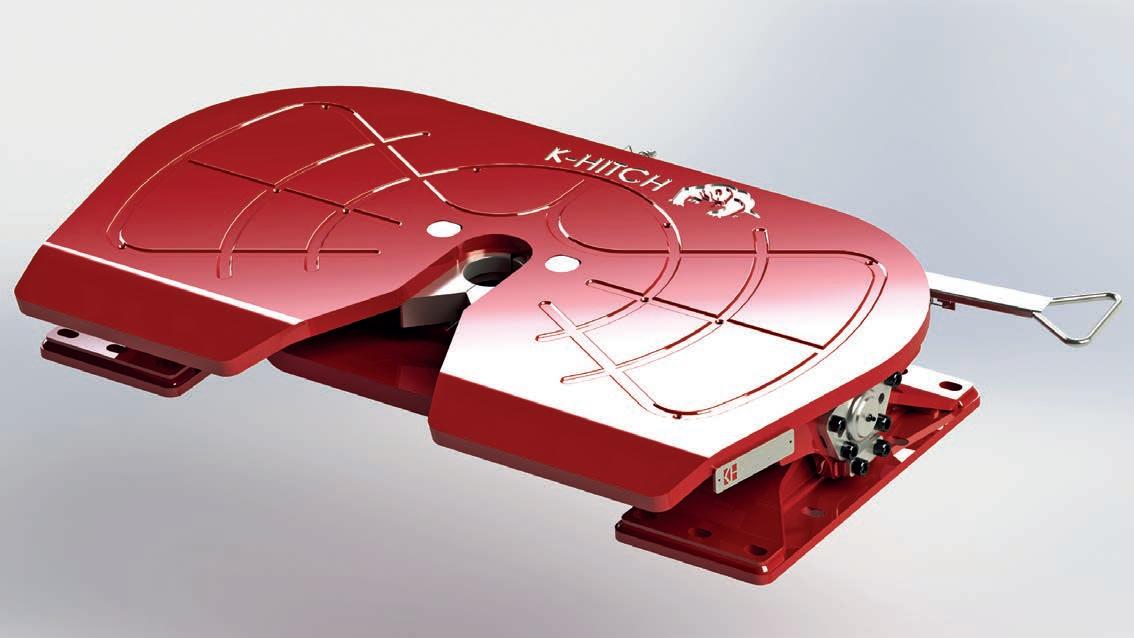
Fifth wheels have been an integral aspect of Fuwa K Hitch’s value proposition since its inception and have remained a flagship product through decades of operations – the company initially started with the manufacturing of its Road Boss fifth wheel.
K Hitch was later acquired by Chinese producer, FUWA, to form Fuwa K Hitch and offer an expanded product range to the market. As a result, the fifth wheels remained vital to the company’s identity.
This is a statement supported by Fuwa K Hitch State Manager, Ryan Ussher.
“The business started around the turntable,” he says. “Our turntables are a very important part of our business across the country, along with our axles, suspension and other offerings.”
As Fuwa K Hitch and its customer base
has grown around Australia so too has its manufacturing capabilities and its fifth wheel range as a result. The equipment has been refined and developed over the years, now accommodating a variety of applications with ease.
Today, Fuwa K Hitch’s fifth wheel offering consists of the Komodo, Road Boss, Fleet Master Cast KC and KA-C/D and Highway Master lines. Each of these have been built with attributes to support specific customer applications depending on the cargo that certain transport vehicles are carrying as well as the terrain they are travelling on.
“We cover the whole range of applications, whether it be for metropolitan use, out in the country, or for something needing mining specs,” Ryan says.
For example, the Komodo line is designed for implementation on mining transport vehicles and is further categorised into three types.
The Komodo 75 is the biggest fifth wheel in the company’s product range, with the greaseable model boasting a 90mm heavy-duty two-piece jaw and a whopping 450kN rating. The Komodo 75 top was originally designed for the rough Indonesian market as customers there were asking for a higher rated top to suit their heavy-duty coal mining road trains. After time spent visiting and collaborating with the Indonesian customers to find out what their wants and needs were, the new Komodo 75 was born. The name ‘Komodo’ came as a nod to the Indonesian market which the top was originally designed for.
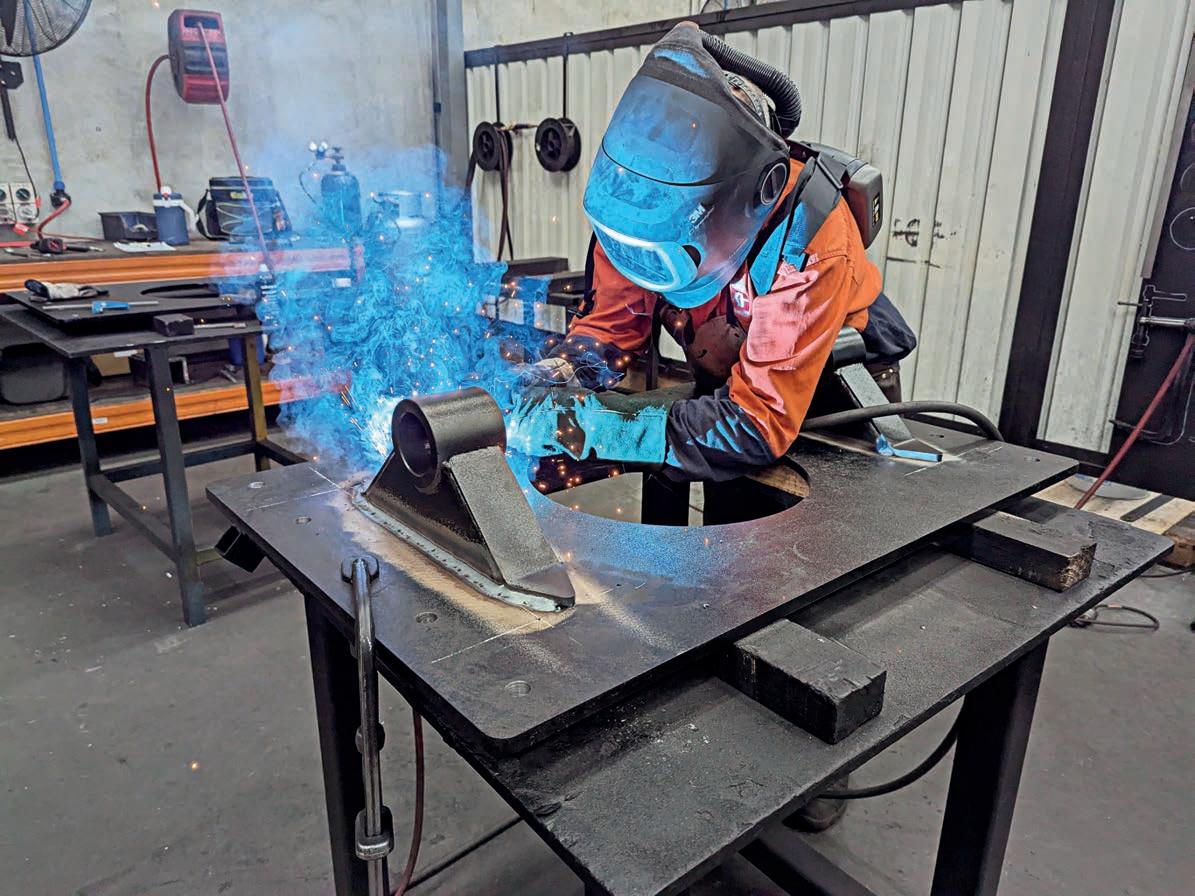
The other Komodo fifth wheel models, Komodo 40 and Komodo 50, come with the same heavy-duty jaw but with a smaller footprint and 360kN rating, with the latter also containing a double oscillating trunnion.
According to Ryan, these variants are particularly popular in WA, South Australia, Queensland and the Northern Territory due to the heavy presence of mining in these areas.
“Mining transport vehicles need secure equipment that can support the towing of large quantities of minerals across difficult terrain which is something Fuwa K Hitch caters to specifically,” he says.
The Road Boss is another fifth wheel popular with Fuwa K Hitch’s customers and it’s comprised of four variants – KH 10D, 11D, 12D and 13D. These types all vary in terms of width and come with either a greaseable or greaseless top, with the 11D featuring an extra-wide greaseable top and the 13D featuring an opposingly extra-wide greaseless top. Meanwhile, the Fleet Master fifth wheel
comes as a single-piece adjustable jaw design in both 50mm and 90mm tops and in either greaseable or greaseless forms. This fifth wheel also has a kit that can convert the standard side handle to a frontpull design.
“This function allows the given A trailer to roll back on its chassis and clear the turntable entirely,” Ryan says.
Finally, Fuwa K Hitch’s Highway Master serves as the company’s lightest fifth wheel on offer. Consisting of two types (KA 10A50 and KA 12A50), this fifth wheel comes as a 50mm adjustable jaw and is a press top design.
The impressive diversity of Fuwa K Hitch’s fifth wheel range allows for the company to service a high volume of customers across a wide range of applications. The business is further bolstered by the company’s strong brick and mortar presence in the form of three large warehouse facilities located in Kenwick, WA, Derrimut, Victoria, and Heathwood, Brisbane. Derrimut and Kenwick also have manufacturing facilities that are key to assisting Fuwa K
assemblies which are used for different types of prime movers, dollies and A trailers and have the ability to build the various types of assemblies within a quick time frame.
From these sites, Fuwa K Hitch’s large amount of stock is then distributed across the company’s expansive retail network. This major availability is not limited to fifth wheels but is instead something the company strives to offer across all its product ranges.
Fuwa K Hitch has long operated as a staple of Australia’s manufacturing industry, providing quality equipment to an array of customers. The company’s fifth wheels, which have always been crucial to the product lineup, have developed to service various clients with specific vehicles in specific environments.
Contact
Fuwa K Hitch
Ph: 03 9369 0000
Web: www.khitch.com.au
With the help of JOST and its transport componentry, Sonnex has been able to extend its capabilities as a precision manufacturing conglomerate into a completely different business venture.
Sonnex’s diverse 26 year-long manufacturing history began in Australia’s automotive industry. Founded in 1999 by Jano Tuchyna, the business initially provided engineering and maintenance assistance to a variety of manufacturers in South Australia, one being Holden.
This support turned into the essential upkeep of manufacturer production lines which proved an ideal environment for Jano and the company to develop many of its now-staple metal shaping techniques like profile cutting, CNC folding and surface finishing.
Yet as the country’s car manufacturing industry fell into decline in the years to follow, Sonnex decided to use its expanded skillset to adapt the business, transitioning into new markets to meet manufacturing demand through the use of new technology.
From there, Jano’s acquisition of a laser machine – reportedly the first of its size in the Southern Hemisphere – allowed Sonnex to cut and produce sizes of metal that it claims Australian consumers were not previously able to purchase.
Armed with equipment working to an unprecedented quality, the transition
into other markets proved extremely successful, and Sonnex hasn’t looked back. According to Sonnex Manufacturing Manager, Ben Gibbs, the company’s production capabilities now efficiently service a multitude of sectors.
“Currently, we service mining, defence, manufacturing, food and beverages and everything in between,” he says. “We also manufacture for white goods, medical devices and the medical industry at large, as well as for motorsport, transport and civil engineering. We pretty much have our fingers in every bit of precision manufacturing.”
Sonnex’s chameleon business operations have helped the company to amass both a team of talented employees and an arsenal of cuttingedge technology across its many sectors.
For example, one of the company’s latest transitions – applying its manufacturing prowess further towards the transport industry – has been in effect since late last year through the purchasing of RLB Enterprises.
While the industry shift had first seemed to be uncharted territory for Sonnex, the company has sought to take this
challenge in its stride and use it as a learning opportunity.
“We’re coming into this very tentatively,” Ben says. “We’re trying to learn from everyone’s experiences. We’re leaning on suppliers for their industry knowledge.”
JOST is one of these key suppliers, and one which has worked extensively with Sonnex to provide equipment and components since the latter’s entry into the sector last October.
As the parent company of RLB Enterprises, Sonnex already owns and operates some heavy-duty manufacturing equipment and vehicles and is now collaborating with JOST to navigate the servicing and operating of this machinery further. As part of this servicing, JOST supplies Sonnex with essential components to ensure smooth handling of the machinery they’re fitted to.
“We are currently using JOST turntables, landing legs, hydraulic cylinders, Razor tarp systems, kingpins, Rockinger couplings and JOST aluminium wheels,” Ben says.
JOST’s provided componentry has helped Sonnex to construct and innovate its transport vehicles with precision, something that Ben views as crucial to Sonnex’s operations.



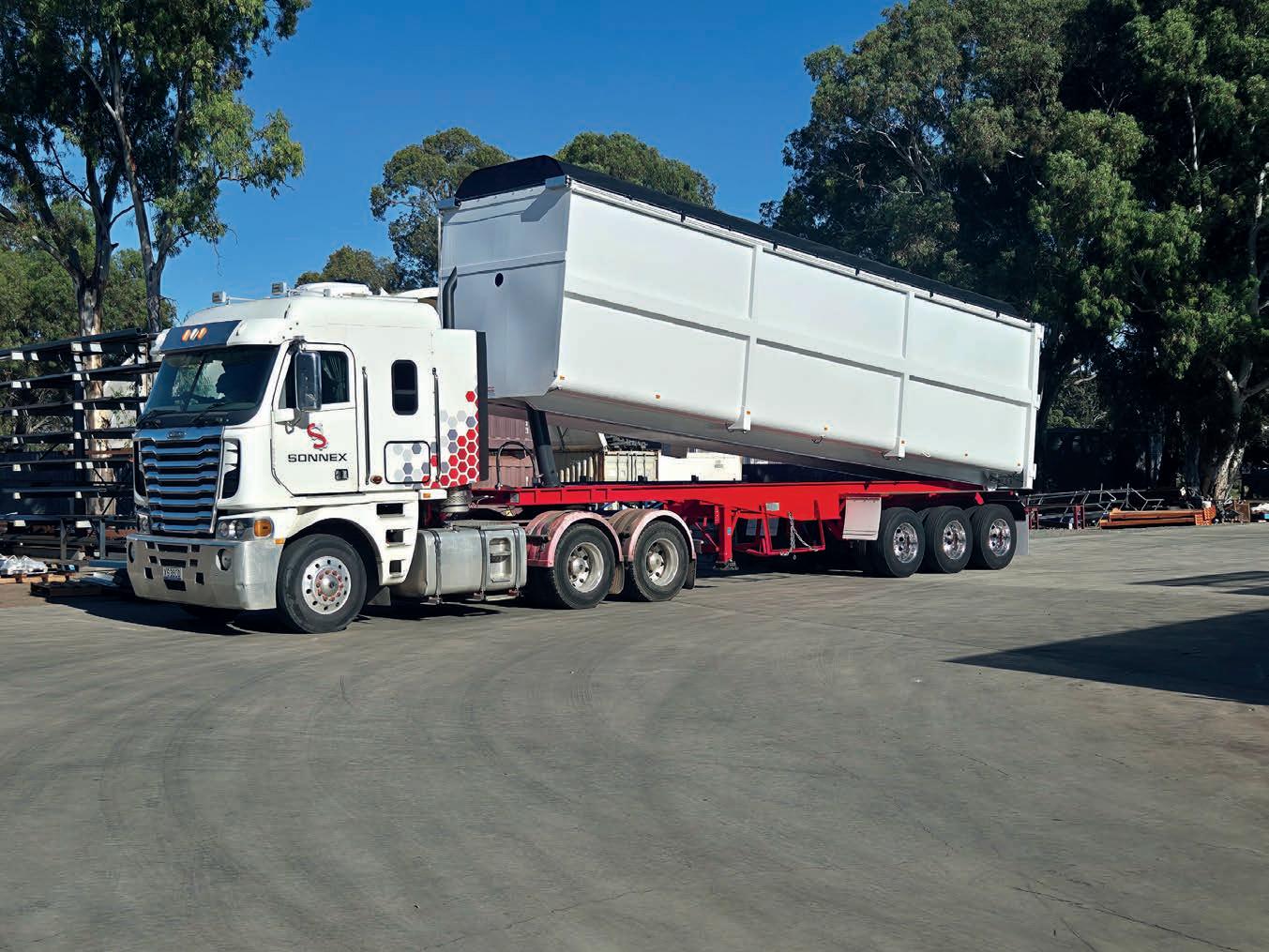
“Precision is one of the biggest attributes that we like to focus on at Sonnex,” he says. “That quality has really come through with the JOST products as we’ve been using them.”
The importance of precision in production and manufacturing is just one of the business approaches and ideals that Sonnex and JOST share as likeminded companies. Both parties place high value on customer service, and as a customer of JOST, Sonnex can certainly vouch for this.
“The customer focus between our companies is definitely the value that aligns them the most,” Ben says. “At Sonnex, we’re very much about working closely with all our customers and taking all their product builds personally.

“We do our best to support each customer through their own request, and that’s the kind of service that we’ve been enjoying from JOST. It’s been nothing but helpful.
“Grant De Bais has been the main JOST contact for us and he has been absolutely fantastic.”
In addition to upgrading its existing fleet, RLB Enterprises, under Sonnex, is seeking to expand its product range with the addition of more vehicles to further integrate the company in the large and competitive industry. Ben is exploring the option to manufacture triple-axle tippers, converter dollies, plant trailers, pig trailers, dog trailers and more – all of which will receive the JOST treatment.
“JOST has a great reputation,” he says.
“We’re definitely looking to expand what we can do with them.
“I’ve already been in conversation with them in terms of what other products they can provide.”
Sonnex has enjoyed great success as a jack of all trades, applying its refined manufacturing techniques to a variety of industries for much of its lifetime. As the company breaks into the transport sector, its relationship with JOST has proven to be one of extreme quality and care, delivering meticulous and innovative products.
Contact
JOST Australia
Ph: 1800 811 487
Web: www.jostaustralia.com.au

SSAB’s Hardox, known as one of the hardest and toughest wear steels in the market, is celebrating 50 years in style by going emission-free with SSAB Zero.

The year of 1974 saw a breakthrough in steelmaking when global steel manufacturer, SSAB, introduced the world’s first bendable wear plate. A unique combination of hardness and toughness, the company claims, helped to solve the issue of brittleness in conventional abrasion-resistant steels which were ‘nearly impossible’ to bend and could not withstand heavy impact in use.
In 1983, SSAB’s mill in Oxelösund, Sweden, created a truly hard wear plate that was branded as Hardox – a name that perfectly describes its strength. Today, it’s still proudly produced in Sweden, the
United States and Finland, and it is widely used across the entire world.
“It all started with Hardox 400 which was launched in 1974,” says SSAB Marketing Manager – South East Asia, Japan and Pacific, Kris Chua. “It was the first user-friendly wear plate with mechanical properties that allowed it to be cut, bent, welded and machined without any hassles in the workshop.
“Then came Hardox 450, further positioning Hardox as the wear-resistant steel of choice for demanding customers across the world.”
After this ultimate workhorse came a wide variety of grades to meet almost any
conceivable worksite challenge – Hardox 500 Tuf, Hardox HiAce and Hardox HiTemp. According to SSAB, when Hardox 500 Tuf was released it was rapidly adopted as the new standard for wear plate. With its outstanding hardness and toughness it has since delivered unparalleled performance, even in freezing conditions, and it can be used in nearly any application.
The full Hardox product range also includes extra-tough Hardox HiTuf, and for wear parts and liners that need exceptional hardness customers can choose from Hardox 500, Hardox 550, Hardox 600 and Hardox Extreme.
SSAB is now furthering the ongoing
SAB Zero has zero fossil carbon emissions (less than 0.05 kg CO2e emissions per kg steel in scope 1 and 2) in operations, including purchased energy and transportation.

development of this product with its firstever emission-free steel in the Hardox range known as SSAB Zero.
“As we look back on 50 years of progress, we remain firm in our commitment to develop a steel that meets the challenges of a modern world,” Kris says. “That’s why we’re thrilled to present our first-ever emission-free steel in the Hardox range, Hardox 450 made from SSAB Zero.”
SSAB Zero, according to the company, is the world’s first emission-free steel of its kind. This new version of Hardox wear plate retains all the qualities which made Hardox 450 renowned around the world except it goes one step further.
SSAB Zero is produced in electric arc furnaces (EAF) using recycled steel as the raw material and the production process is powered by fossil-free electricity and biogas. The end result is steel produced with virtually no carbon emissions during the steelmaking process.
“By utilising steel scrap and fossilfree energy, we can make a significant
contribution towards decarbonising the steel industry,” says SSAB Vice President Sustainable Business, Thomas Hörnfeldt.
“Along with our continued efforts to develop the world’s first fossil-free steel, SSAB Zero will be an important part of our future comprehensive zero fossil carbonemission steel offering.
“Based on the increasing customer demand for fossil-free steel, we soon realised that we could use more than one technology to meet the challenge of decarbonisation. We now have a comprehensive offer of zero carbon emission steels, so that regardless of the ironmaking process – based on iron ore or recycled scrap – SSAB will have the best offering on the market.”
In many industries that rely on steel, finding greener alternatives is imperative to combating climate change. However, when it comes to SSAB Zero, SSAB does not engage in any mass balancing allocation of emission reduction or carbon offsetting activities.
The carbon emission reductions are real and tangible, and SSAB is completely transparent about any associated carbon emissions no matter how small. Plus, it guarantees that the carbon footprint of both steels will be verified by a third-party.
“We understand that for many of our customers, steel represents a large part of their own carbon footprint, so they need complete transparency,”
Thomas says. “We always ensure our steels are delivered with accurate and reliable values, which our customers can use with confidence in their own footprint calculations.”
SSAB Zero steel has the ability to reduce the environmental load from steel production even further, and by using the innovative wear plate, SSAB says businesses can take their sustainability goals to the next level.
Contact
Email: australia@ssab.com
Web: www.ssab.com
The Australian Livestock and Rural Transporters Association is launching its ‘Braking Habits’ project to encourage better safety in the livestock transport industry through the use of smart braking systems and telematic data.
The Australian Livestock and Rural Transporters Association (ALRTA) is working in collaboration with several leading livestock transporters and transport insurance provider, NTI, to improve safety and reduce truck roll-over crashes.
The ‘Braking Habits’ project is at the forefront of this initiative, with its key aim being to educate the livestock transport sector on the benefits of using data provided from telematics and smart braking systems such as Electronic Stability Control (ESC).
“The livestock industry has been resistant to advanced braking technologies which is largely driven by concerns over its durability and service,” says NTI Transport Research Manager, Adam Gibson. “I’d suggest that the first adopters of most of these systems had a tough time in terms of reliability, durability and also the personnel skills to keep these systems working.
“But we’ve now got technologies that can powerfully talk directly to the key risk, rollover crashes.”
The ALRTA’s key message is this – smart braking is now mandatory on new heavy vehicle combinations and operators are already paying for it through additional costs on trailers and prime movers, so why not get the most out of it?
Enter Betts Rogers Livestock Transport and Frasers Livestock Transport, two key transport companies which are completely behind this messaging. Through their previous knowledge and recent case studies with the ALRTA, they have both experienced the benefits of smart braking systems and using telematics data.
Betts Rogers Livestock Transport prides itself on the way its drivers take care of their livestock loads, and the results obtained using diagnostic ESC data in a recent trial supported this. More importantly, the findings demonstrated that using the data alone helps operators manage their fleet compliance and safety responsibilities.


Air Brake Systems, we downloaded the data from our trailers to establish a baseline,” says Betts Rogers Livestock Transport General Manager, Chris Betts. “I didn’t realise how in depth it went into the details. The EBS data allowed us to have some great conversations with our drivers, publicly celebrating the highest performers and privately coaching those with higher rates of stability control events.”
Similarly, Frasers Livestock Transport recently fitted an ESC system to one of its B-double combinations in Queensland which travelled from Goondiwindi to Kingaroy with data and email alerts in real-time.
“This project will be a game changer for the industry,” says Frasers Livestock Transport Compliance and Central
to have it sitting there and you not even looking at it or knowing anything about it.”
The ‘Braking Habits’ project will be rolling out in full effect in April this year at the 2025 National Rural Carriers Convention in hopes of increasing awareness on the potential of data from smart braking systems.
Contact Australian Livestock and Rural Transporters Association
Ph: 02 6247 5434
Web: www.alrta.org.au


MaxiTRANS has changed its name to Freighter Group.
The new Freighter Group stands for something more powerful than ever before. It stands for being ready.
Ready to push boundaries, deliver excellence and to help you go further. Be part of a new era in transport.
freighter.com.au
As Australia’s living costs rise, CouriersPlease CEO, Richard Thame, predicts a boom in side hustles and digital-first delivery solutions for 2025 which will ‘reshape’ the parcel delivery landscape.
CouriersPlease has been a staple of Australia’s e-commerce industry for over 40 years, enjoying exponential year-onyear growth, continued collaborations with top retail brands and operating over more than 800 active franchise territories.
CouriersPlease CEO, Richard Thame, recently shared his forecast for the parcel delivery landscape for both this year and beyond. These predictions include everything from digital advancements and company side projects to regional expansions.
Thame predicts Australians will increasingly turn to e-commerce side hustles to supplement incomes, driving demand for flexible logistics solutions to support their growing ventures. Research from Small Business Loans Australia has found that 38 per cent of Australians are considering starting a side hustle alongside their existing job in the next five years, with 68 per cent motivated by the potential to earn extra income.
Thame has particularly acknowledged the changing tides of Australia’s economy and cost-of-living as one factor motivating people to approach e-commerce opportunities.
“With Australia’s living cost index rising by 4.7 per cent in the year leading up to September 2024, we are witnessing a significant shift,” he said. “An increasing number of Australians are turning to e-commerce side hustles to supplement their income.
“I believe 2025 will mark an unprecedented surge in Australians embracing the side hustle economy.”
These statistics, in addition to being driven by more income, are also driven by the changing concepts of work environments.
“Beyond the pursuit of additional
income, we’re witnessing a fundamental transformation in the workforce,” Thame said. “People are seeking flexibility, autonomy and the ability to shape their careers on their own terms.
“This shift is redefining traditional employment models and fuelling the rise of the side hustle economy.”
Describing this surge, Thame pointed to Australians equipping platforms like Etsy, eBay and Shopify as easy and intuitive spaces for entrepreneurs to launch businesses with minimal startup costs, with Shopify taking social commerce to the next level by recently integrating TikTok Shop to enable in-app shopping.
“The integration of TikTok Shop into Shopify is taking social commerce to new heights, enabling in-app shopping experiences that were previously unimaginable,” he said.
CouriersPlease observed a similar surge in side-hustle entrepreneurs and small businesses equipping the platform’s delivery services. These industry-wide trends seem to highlight a growing need for flexible and scalable logistics solutions which accommodate the changing demands of small-scale e-commerce operators.
This need for flexible and scalable solutions leads to another one of Thame’s major trends predicted to shape e-commerce and parcel delivery in the future, with the advent of seamless returns and pick-up and drop-off (PUDO) options.
Thame claims this anticipated shift will see logistics providers increasing partnerships with local businesses to expand these PUDO networks as consumers increasingly value simplicity and efficiency.
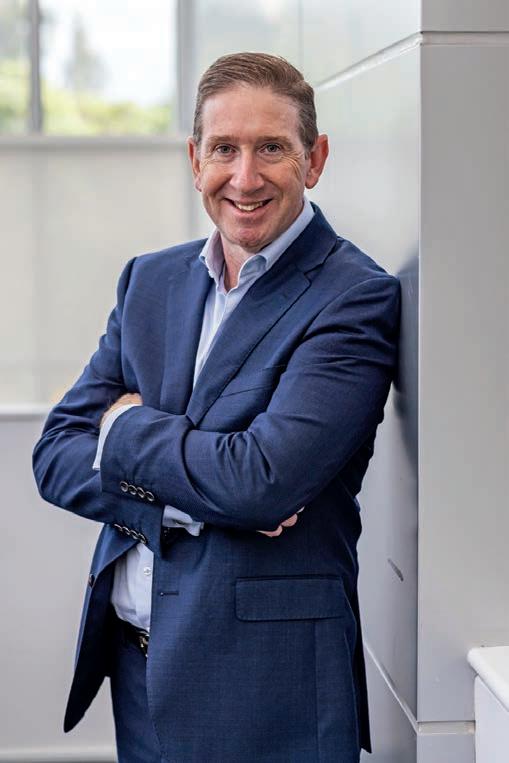
In response to the continued growth of e-commerce platforms, Thame is anticipating a major shift towards digitalfirst delivery this year, with real-time tracking and priority services at the forefront.
Retail and carrier digital integrations will reportedly continue to be enhanced, and customers should expect to see more than real-time tracking, proactive updates and day-specific delivery windows that align with hybrid work schedules as consumers prioritise control and convenience.
“Australians now expect more than just

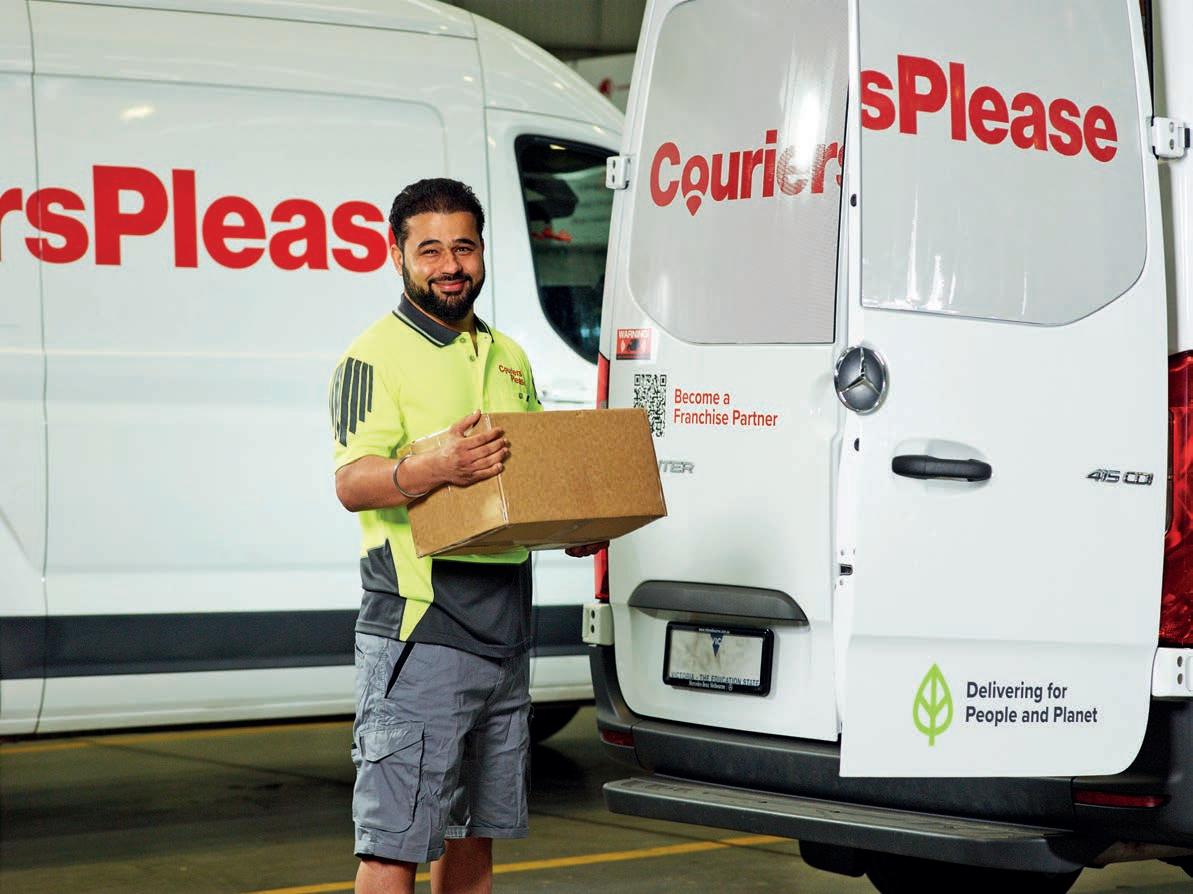
fast delivery,” Thame said. “They want transparency, convenience and control over every step of the journey. We’re evolving to meet these demands that put customers in the driver’s seat.
“In the months to come we’ll see a sizable shift in technology being leveraged to give shoppers greater control, such as adjusting delivery time slots in real time. We’ve also launched CP Direct, our new booking platform designed for simplicity with automation that provides a seamless shipping experience for our customers.”
Thame is also predicting the booming of resale commerce on a local scale, following a specific growing demand for sustainable second-hand fashion. With Australia’s fastfashion consumption under scrutiny, he said resale commerce will rise as more shoppers opt for second-hand options.
“Australians are becoming increasingly aware of the environmental toll of fast fashion,” he said. “As one of the largest
textile consumers globally, Australia is ripe for change.”
The aforementioned predicted trend is very similar to Thame’s fifth one – a greater emphasis on sustainability. He believes that in response to consumer demand for eco-friendly practices, major retailers and delivery services will deepen their commitment to green logistics. If this is true, the market will see accelerated investments in ecofriendly facilities, optimised delivery routes to reduce emissions, green-rated warehouses and green-procurement policies.
“With the global re-commerce market projected to reach $413.7 billion by 2028, I expect we will see in Australia, where per capita textile consumption is among the highest globally, the adoption of second-hand marketplaces is expected to reshape the retail landscape towards more sustainable practices,” Thame said.
As regional areas grow and Australians battle cost-of-living increases and property price hikes, Thame foresees city-level delivery services ramping up for regional Australians – creating more franchise opportunities in the industry and supporting local economies. This bolstered regional delivery reach will create more franchise opportunities in the industry and support local economies.
Lastly, Thame claims factory-first shopping is expected to increase, allowing entrepreneurs to sell directly to consumers and streamlining the buying process as a result.
A recent CouriersPlease survey of 1,000 Australian online shoppers found that 71 per cent had made a purchase through Amazon and 55 per cent through Temu in the September 2024 quarter.
Austroads’ 2023-24 Annual Report highlights significant progress in driving safety, digital transformation and harmonisations across the Australian and New Zealand transport sectors.
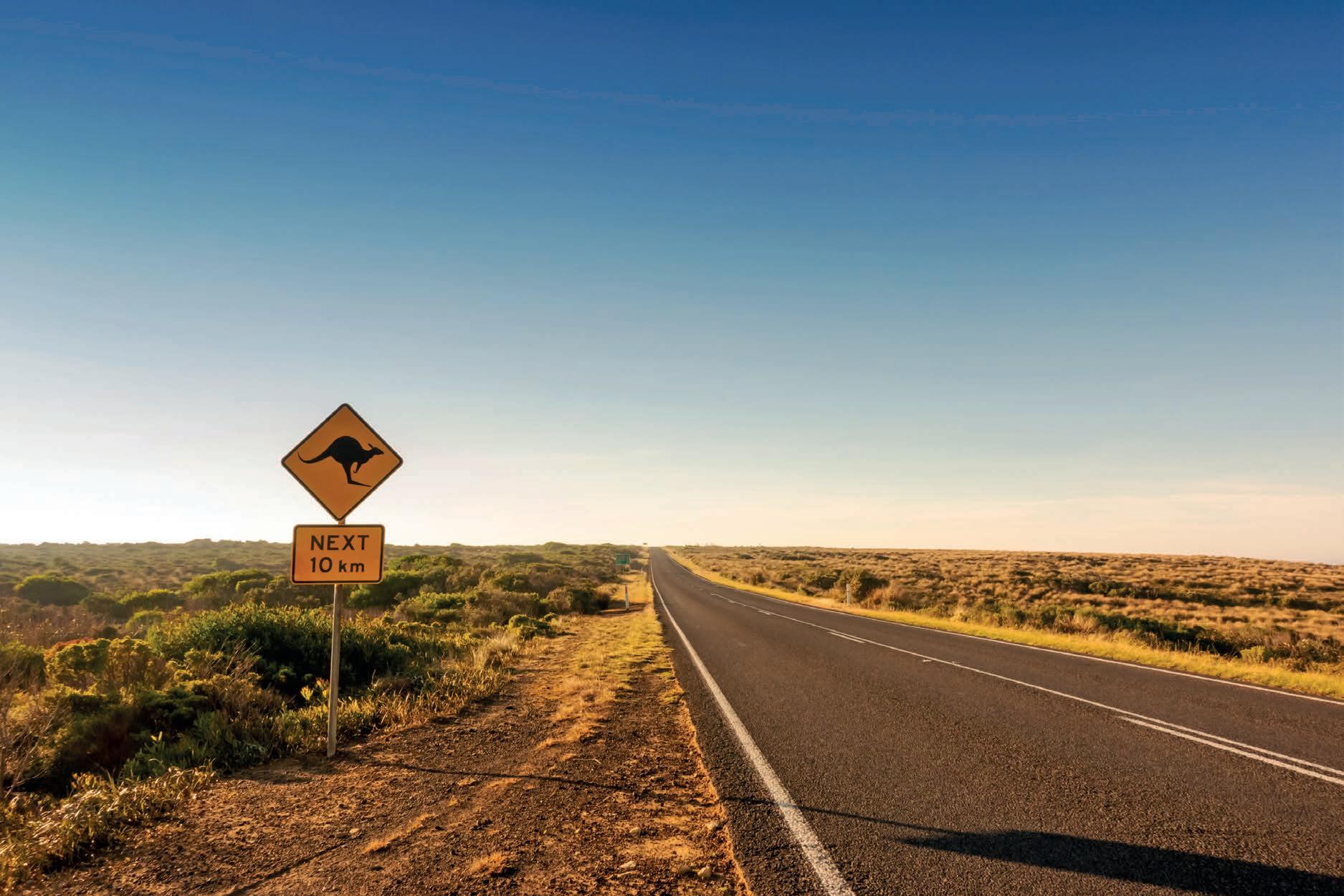
Austroads, the not-for-profit association of the Australian and New Zealand transport agencies representing all levels of government, is dedicated to providing a range of solutions which ensure safe and reliable mobility to its customers on the road. These services range from professional advice and counsel to evidence-based research and practical tools, all of which are underpinned by a focus to make transport infrastructure sustainable for the future.
The association itself consists of different member organisations both across and beyond Australia. Their representation enables Austroads to develop various research programs, implementation projects, product development and service operations. Austroads achieves its different
transport outcomes and assists its member organisations by offering guidance or advice through research, collecting imperative data through telematics systems to ensure safe movement of heavy vehicles and freight and coordinating different road safety and efficiency practices.
Austroads’ 2023-24 Annual Report has revealed the period to be one of extensive growth for the organisation, with external projects and internal operations growing in scale and scope when compared to performances in the 2022-23 period.
Demand for and engagement with Austroads’ services has also increased
significantly. In 2024, 561,000 publications under Austroads were downloaded –a statistic up by 41 per cent from the previous year. The organisation also produced 243 publications, a 138-per-cent increase from the previous year.
Additionally, the organisation has seen significant increases in vehicular and infrastructural projects. In total, 16,150 vehicles have been enrolled in Transport Certification Australia (TCA) administered schemes, a number up by 24 per cent from the previous year, while new services like the training of temporary traffic managers and roadside barriers and installers have received high traffic.
In addition to increased demand for its service, Austroads has undergone major structural change. This change has been guided by the organisation’s Strategic


and governance clearly showed that by breaking down barriers we could be an organisation that was more than just the sum of its parts,” he said.
“Internally, the restructure required the mammoth consolidation of all of our HR and payroll functions which the team delivered smoothly.
Austroads’ members spent 2024 working to adopt ISO 18013-5 for digital drivers licences, an initiative which aims to harmonise credentials across Australia. According to Austroads, the adoption of this standard will improve licensing verification and reduce exploitation of credentials.
Plan 2023-27, according to Austroads Chair, Louise McCormick.
“This was an important year for Austroads,” she said. “Under the guidance of our Strategic Plan 2023-27, together with the work we undertook to improve our organisational design, we have made significant strides in maturity as an organisation and have continued to implement, formalise and update our governance structures and frameworks.”
Following the parameters of the Strategic Plan, Austroads’ restructuring aims to enhance its operational capability in order to further consolidate the provision of its services and efficiently meet demand as a result, according to Austroads Chief Executive, Dr Geoff Allan.
“The outcome of a comprehensive assessment of our structure, performance
“We are also working towards compliance with ISO 9001, a globally recognised standard for quality management, to improve our performance, meet members’ expectations and demonstrate our commitment to quality.”
As further restructuring, Austroads engaged with a consulting firm last year for an appraisal of its governance and adopted an operational system based on five ‘pillars’ of governance which would dictate the organisation’s culture, processes for accountability, internal and external environment, organisational performance and future direction.
Austroads has also been working throughout the 2023-24 period to implement many frameworks and systems to contribute to increasing road safety and mobility for customers. The implementations of these frameworks have been varied throughout the year.
Austroads was crucial to developing this standard in global partnership with the American Association of Motor Vehicle Administrators representing North America and the Association of European Vehicle and Driver Registration Authorities representing Europe. The new standard seeks to guarantee privacy, security and compatibility across Australia and internationally.
To support these advancements, Austroads collaborated with different governments to establish a national Digital Trust Service (DTS) which would provide the ability for an individual to allow a business or government to verify a credential, such as a digital driver licence, in a way that preserves privacy. The DTS aims to implement this approach of harmonising digital credentials with international technologies which have been well-received around the world.
Austroads tested DTS functioning at the IVC24 Summit in Sydney in October last year.

Additionally, Austroads has undertaken an extensive program of work to review and improve the National Heavy Vehicle Driver Competency Framework which outlines the minimum competency and assessment standards for heavy vehicle drivers across Australia.
In late 2023, Australia’s transport ministers agreed to the principle of a nationally uniform approach to the training and licence progression of heavy vehicle drivers across the country in hopes of increasing safety and capability and harmonising heavy vehicle training and assessment. Austroads is working with each Australian state and territory government as well as industry stakeholders to develop implementation plans for these reforms, and stages are expected to roll out within the next few years.
As part of Austroads’ work on the National Heavy Vehicle Driver Competency Framework review, the organisation has also sought to improve safety via hazard perception testing of heavy vehicle licence applicants.
Commissioning Professor Sharon Newnam from the Centre for Accident Research and Road Safety to lead the world-first heavy vehicle hazard
perception test for Australian applicants, the program’s results are included as part of the framework review into Australia’s heavy vehicle licensing system.
Austroads has also continued work on a national automated access system (NAAS) which will support road managers including road authorities, local government and third parties to provide access decisions more efficiently, driving productivity and safety across state borders.
In 2024, the Austroads Board approved a staged project implementation to deliver progressive solutions on the roads. As part of Stage One, Austroads completed a legal review to assist the implementation of the NAAS, documented the functional requirements and needs of road authorities and worked to describe practices pertaining to structure, road and pavement assessment processes for heavy vehicle consent.
Spatial mapping processes were also completed by road authorities and Austroads completed a concept of operations which provided the high-level architecture of the NAAS’ remaining stages.
Part of Austroads’ implementation of
certain programs and frameworks include the handling of imperative data.
Austroads owns and manages the National Exchange of Vehicle and Driver Information System (NEVDIS), an essential component of Australia’s ability to register vehicles, exchange licence and vehicle information across state borders and verify licence information. The system has recorded an unprecedented 350 million transactions, including over 40 million licences verified via the National Document Verification Service.
Additional projects developed by Austroads include the Temporary Traffic Management Training Framework (TTMTF) and the Austroads Safety Hardware Training and Accreditation Scheme (ASHTAS), both of which combined have seen more than 3,000 people trained to improve the safety of roads. The implementation of these projects required collaboration with various jurisdiction and industry partners.
ASHTAS in particular works to deliver a high standard and nationally consistent set of training outcomes for those installing and maintaining road safety barriers in Australia and New Zealand.
Mandated training for this specific project in New South Wales, Queensland
and Victoria was completed by over 1,000 people in July of 2024.
Meanwhile, the TTMTF provides a harmonised environment for the rollout of temporary traffic management under an existing plan developed from the Vocational Education and Training (VET) framework. This harmonisation seeks to standardise high quality traffic management training among students, road workers and the wider industry.
In 2024, the national training went live in four jurisdictions, led by Approved Training Providers (ATPs) delivering skill sets in South Australia, Northern Territory, Tasmania and Victoria. More than 2,500 practitioners have enrolled in the courses, delivered by 33 ATPs.
Austroads has been extremely active in conducting and publishing reports pertaining to road safety development and sustainability in the 2023-24 period. Many of these reports achieved success in their designated areas by either finding solutions to current modes of transport or providing crucial insight which will contribute to solving issues through different statistics.
One of the reports, A National Approach
to Developing Non-Fatal Crash Outcomes, demonstrated that it was possible to acquire robust and consistent data on serious injuries caused by road crashes on a national scale. This report further promoted the National Road Safety Strategy’s ultimate goal of reducing serious injuries by 30 per cent by 2030.
Furthermore, Austroads’ Practical Approaches for Managing Regional Road Safety Priorities report brought the lens of road safety to remote and regional locations. Research from this report provided organisations with safety interventions designed to mitigate risk along these less-populated roads to make them safer. The report included detailed evaluation and prioritisation frameworks and was published with a series of 21 fact sheets.
Many more reports tailored to other road transport, safety and sustainability initiatives were published in the 202324 period.
Austroads reported $41.3 million in revenue during the 2024 period, an increase compared to its total revenue in 2023 of $33.5 million. However, the
organisation’s total expenses were much greater in 2024 – $38.5 million in corporate costs, project rollouts and publication spending compared to $26.9 million in 2023.
Austroads’ remaining surplus for 2024 was a reported $2.8 million, a decrease from the year prior’s surplus of $6.6 million.
In 2024, the organisation’s cashflow from operating activities (member contributions, receipts from customers and other sources, payments to suppliers and employees and other streams) was $9.7 million. This value was an increase from its 2023 cashflow value of $8.1 million.
Austroads reported a cashflow from investing activities (movement in term deposits and purchases of plant and equipment) of $10.8 million – a decrease from 2023’s value of $1.1 million.
Cashflow from financing activities (the repayment of lease liabilities) was $695,936, an increase from 2023’s value of $314,490. Combining these values, Austroads’ total cash at the beginning of the year was $24.3 million, while the organisation’s total cash value at the end of 2024 was $44.2 million.
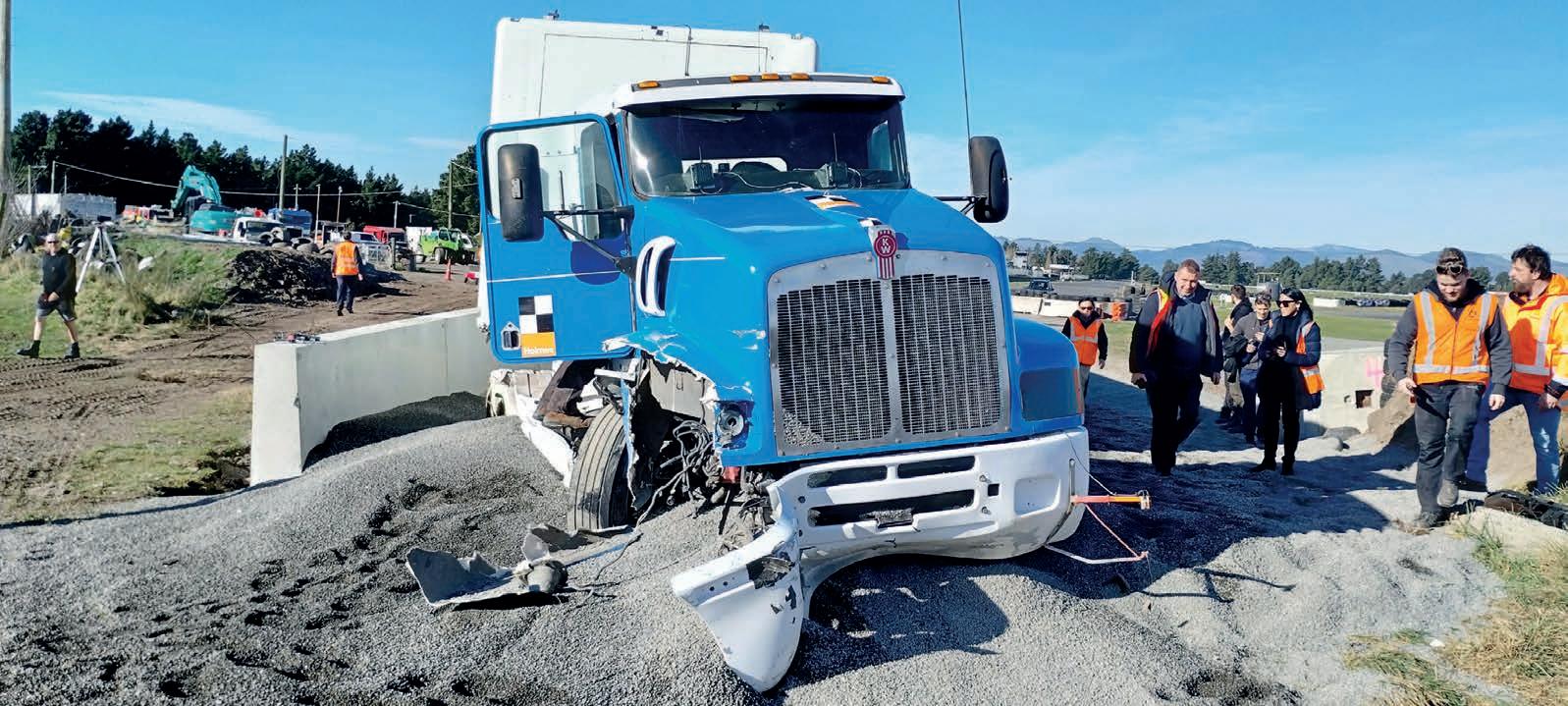
Port of Melbourne’s 2024 Sustainability Report details the progress the organisation has made in sustainability, trading, projects and more over the last financial year.
As Australia’s largest general cargo and container port located in the heart of Melbourne, sustainability underpins the purpose and strategy of Port of Melbourne. This has been evident through the several performance milestones achieved over the last year as outlined in the Port’s latest Sustainability Report.
Port of Melbourne’s container trade in FY24 outperformed FY23, driven by continued growth since February 2023 which marked a low point in imports since the start of COVID-19. Non-container trade in FY24 also experienced positive growth, with increases in dry bulk, liquid bulk and motor vehicles (although break bulk volumes declined). Motor vehicle imports surged to record highs for the financial year.
In terms of trade volume during the financial year, Port of Melbourne saw 90.3
million tonnes of containerised cargo, 59 million tonnes of liquid bulk, 6.4 million tonnes of motor vehicles, 5.7 million tonnes of dry bulk and 3.7 million tonnes of break bulk.
While FY24 saw a decline in consumer goods imports from FY23, overall import trade from China increased. It also saw positive developments in Australia’s trade relationships with China and India – increased engagement with China reportedly led to the removal of several trade impediments that had affected Australian exports since 2020, benefiting key export commodities such as barley, timber, beef and wine. Simultaneously, the India-Australia Free Trade Agreement significantly boosted lentil exports to India.
Port of Melbourne was busy with several projects throughout FY24 to improve and maintain port infrastructure. These
included the acquisition of existing rail assets and lad within the Port to construct a new Coode Road rail terminal, works to improve operational capacity at Victoria International Container Terminal located in Webb Dock East and to accommodate two large vessels simultaneously, remediation work at Swanson Dock West, the upgrading of bollards at Swanson Dock East, the securing of a long-term lease of the former Melbourne Markets site from the Victorian Government and more.
Port of Melbourne has had a number of environmental strategies in place to address key areas of environmental interest. Its approach to environmental management is to understand the potential environmental impacts and take action to mitigate them, and that being said, it has been striving to continue to uphold the highest standards of
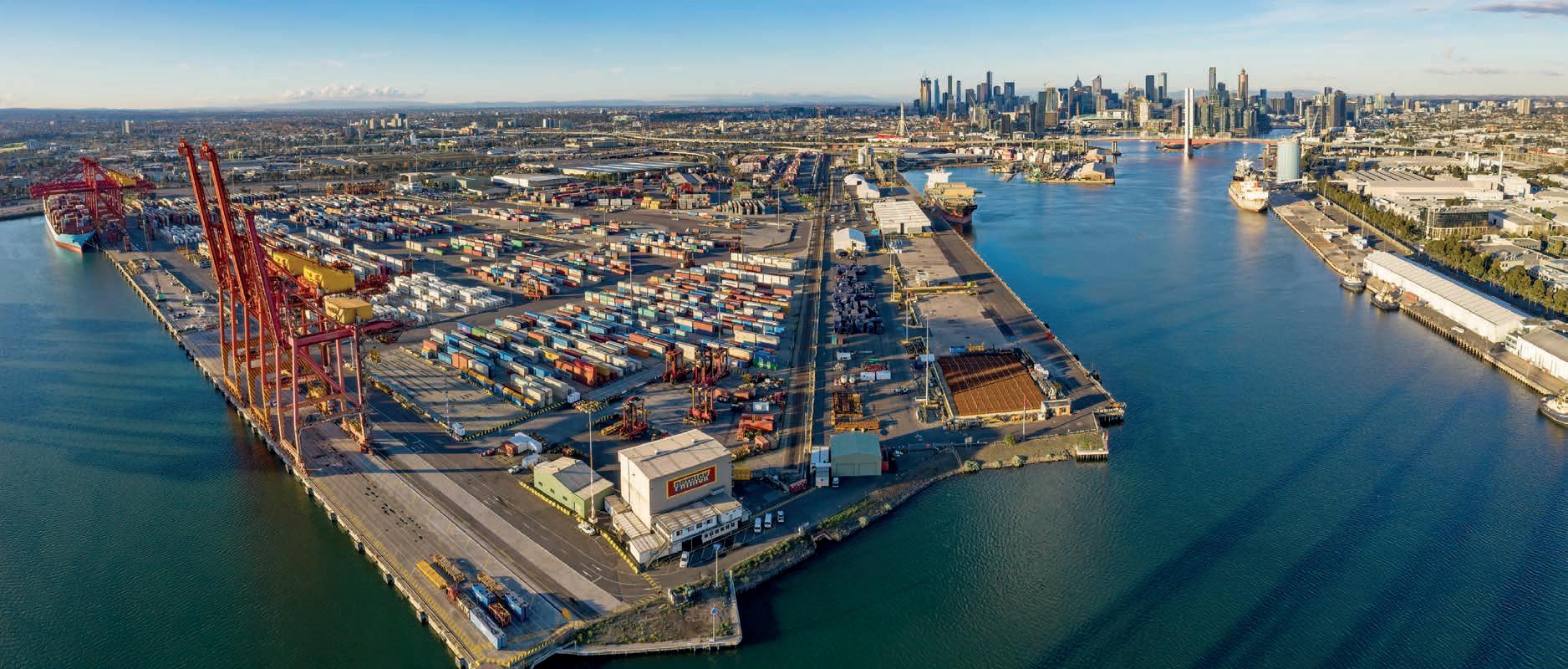
compliance across the organisation.
“Our Climate Change Statement released in June 2023 showed our commitment to assessing, mitigating and adapting to climate change, and included ambitious decarbonisation targets,” said Port of Melbourne CEO, Saul Cannon.
“Since then, we have continued to refine our understanding of climate change risks and opportunities and made significant progress to deliver on our commitments.”
Port of Melbourne has been supporting the Paris Agreement goals and efforts to limit global temperature rise to 1.5 degrees Celsius above pre-industrial levels by the end of this century. It also supports the State of Victoria and Australia’s transition to net zero emissions.
In FY24, Port of Melbourne completed a preliminary climate risk assessment of the physical and transition risks and opportunities that may arise under three different future climate scenarios. It also monitored emerging legislation and reporting standards to ensure that it was aware of any changes to the reporting requirements, particularly the new ASRS requirements.
Port of Melbourne has a net zero target for Scope 1 and 2 emissions by 2030, using the Science Based Targets initiative framework for guidance. In FY24, it achieved a 43 per cent reduction in greenhouse gas (GHG) emissions compared with FY23. It also
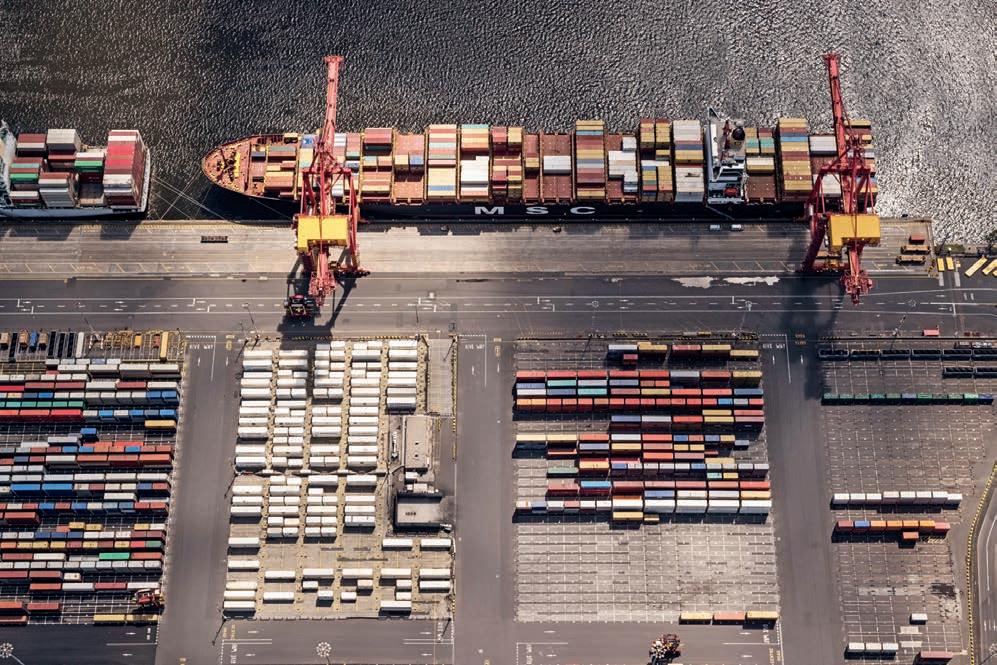
set a Scope 3 engagement target to identify opportunities to collaborate with our stakeholders to discuss emissions reduction initiatives. In FY24, the Port engaged with 62 per cent of its Scope 3 value chain on climate change and GHG emissions topics.

Port of Melbourne has made significant progress in reducing its emissions and planning for longer term initiatives since setting its net zero emissions target. In FY24, Scope 1 and 2 emissions were 1,592 tCO₂e – a reduction of 43 per cent from FY23. A further reduction is expected in FY25.
In addition, Port of Melbourne commenced a renewable Power Purchase Agreement on 1 July 2024 which means that more than 60 per cent of its electricity needs now come from renewable electricity sources. The agreement will run until the end of June 2031.
“With more than half our electricity now sourced from renewable sources, we are continuing work to transition the remaining portion,” Cannon said.
On top of this, the Port is planning to transition its corporate vehicle fleet and marine survey vessel to electric or zeroemissions fuel technologies to reach the net zero target by 2030.
Around these efforts, the Port has been working to minimise waste production by reusing and recycling materials where possible as well as participating in several external industry working groups and committees to share knowledge and advocate on infrastructure development and supply chain issues. It has also been contributing to government policies such as the National Transport and Infrastructure Net Zero Consultation Map, Maritime Emissions Reduction National Action Plan and Future Made In Australia: Unlocking Australia’s Low Carbon Liquid Fuel Opportunity.
“Sustainability is increasingly integrated into what we do, from our long-term infrastructure planning to our day-today operations and interactions with our stakeholders,” Cannon said. “We remain committed to annually disclosing our sustainability performance and improving our reporting in accordance with emerging reporting standards, including the Australian Sustainability Reporting Standards.
“I thank the Port of Melbourne Board, Executive Leadership Team and all our employees for their contributions to our sustainability program and look forward to our continued collaboration to achieve our sustainability goals.”
FedEx is the first and only global end-to-end transport and logistics provider to earn ISO 9001 certification for 30 years in a row. Image: JHVEPhoto/stock.adobe.com.
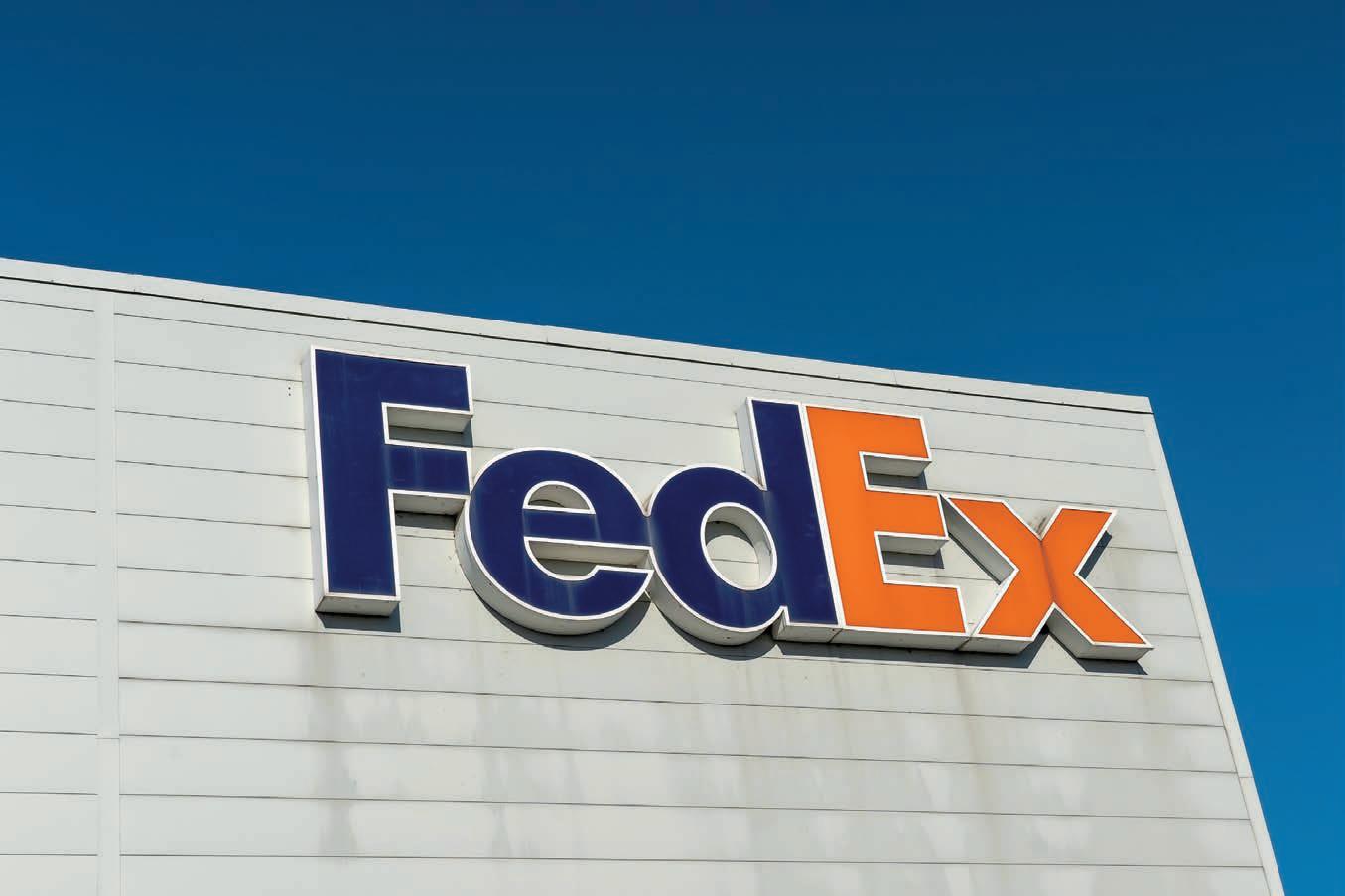
Global express transport company, FedEx, has achieved ISO 9001 certification for the 30th year in a row.
FedEx has become the first and only global end-to-end transportation and logistics service provider to earn the prestigious ISO 9001 global certification for 30 consecutive years – a status that has reportedly never been achieved before in the entire transport industry.
This prestigious certification underscores FedEx’s unwavering commitment to quality and operational excellence, highlighting its dedication to consistently delivering top-notch service to customers worldwide.
ISO 9001 is the world’s most recognised quality management standard which helps organisations improve their performance, meet customer expectations and demonstrate their commitment to quality. It was designed to help organisations ensure that they meet the needs of customers and other stakeholders while complying with statutory and regulatory requirements related to a product or service, and it is also the most widely used quality
management standard in the world.
Benefits of obtaining ISO 9001 certification include increased customer trust and satisfaction, sound quality control processes, cost savings, productivity gains and culture of continuous improvement.
That being said, ISO 9001 certification demonstrates an organisation’s commitment to consistently delivering high-quality products and services, and is a clear indicator of operational excellence. As a result, the certification reinforces FedEx’s longstanding dedication to quality and customer satisfaction. The consolidation of the certifications held by legacy FedEx Express, FedExGround and FedEx Services into a single global certification simplifies processes, enhances operational efficiency and ensures a unified approach to quality management across the entire organisation.
“We are incredibly proud to have achieved this global ISO 9001
certification,” said FedEx Chief Transformation Officer, Sriram Krishnasamy. “This recognition is a testament to the hard work and dedication of our team members around the world who are committed to delivering exceptional service to our customers every day.
“It also reflects our unwavering commitment to continuous improvement and operational excellence.”
The ISO 9001 certification was awarded by LRQA, a leading global assurance partner with over 61,000 clients globally –only 0.7 per cent of which have received similar 30-year certification.
The certification was awarded following a complex assessment conducted over two months of auditing, underscoring the magnitude of this accomplishment.
“LRQA is committed to shaping a better future for our clients, our people, our communities and our planet through risk management, so we are particularly proud to partner with FedEx who shares


the international standard for quality management over 30 years is a truly significant feat, and we offer our sincere congratulations to the team.
“They have demonstrated marketleading dedication to reducing operational risks and driving business performance, going beyond compliance to competitive edge.”
According to LRQA, the advantages of ISO 9001 are fairly substantial as the certification ensures products and services meet consistent quality standards while also promoting efficiency by streamlining processes, reducing waste and improving resource management.
For FedEx, this certification underscores the company’s prime position in the global logistics and transportation industry, reinforcing its reputation as a reliable and trusted partner. FedEx provides customers and businesses worldwide with a broad portfolio of transportation, e-commerce and business services, and with an annual revenue of $88 billion, the company offers integrated business solutions utilising its flexible, efficient and intelligent global network.
As FedEx continues to innovate and evolve, the global ISO 9001 certification
and possibilities around the world responsibly and resourcefully.
This latest development follows the opening of FedEx’s new state-of-theart sortation and distribution facility in Coffs Harbour, New South Wales, in August last year. Upon opening the location, the company claimed it would support economic growth in the region as well as small and medium businesses looking to expand their domestic and international reach.
The facility spans over 2,400 square
up to 1,300 packages per hour.
Strategically located near the Pacific Highway, it has been providing FedEx with easy access for express pick-up and delivery services across Coffs Harbour and surrounding areas, including Grafton to the north and Eungai Creek to the south.
It also serves as a domestic and international collection point, providing seamless end-to-end transportation services for local importers and exporters.

Australian Government pledges $7.2B to fix Bruce Highway
The Australian Government has announced that it will be providing an additional $7.2 billion to upgrade and fix the Bruce Highway in Queensland, bringing it up to a minimum three-star safety rating.
This historic funding is the single largest investment ever into the Bruce Highway and brings the Australian Government’s total outlay for the 1,673-kilometre road to more than $17 billion.
“I’ve driven the Bruce Highway many times, and I know the critical role it plays for Queenslanders, tourists and freight,” said Prime Minister Anthony Albanese.
“Queensland deserves a long-term plan, and that is what my Government is delivering.
“We’re getting on with building a better future for all Australians.”
A new safety package will fast-track critical projects along the whole corridor of the Bruce Highway and will initially focus on priority sections north of Gympie that have been identified by stakeholders due to their higher than average crash rates.
Priority sections include Maryborough to Benaraby, Rockhampton to Saint Lawrence, Bowen to Townsville and Ingham to Innisfail.
Projects within the package may include installing safety barriers, wide centre lines and audio tactile line marking; constructing wider shoulders; increasing run off areas, overtaking lanes and rest areas; and improving intersections, signage and sight lines.
There will also be a focus on resealing and rehabilitating road surfaces for resilience to mitigate damage from increasing weather events.
The Wilman Wadandi Highway – the biggest road project ever delivered in the South West region of Western Australia –has been officially opened.
Traffic has begun flowing on the 27-kilometre four-lane highway which connects Forrest Highway north of Bunbury to Bussell Highway south of Bunbury.
The new road is expected to divert around 15,000 vehicles from local Bunbury roads every day, reducing congestion and delivering safer and more efficient journeys for locals.
The road will also reduce travel times to and from the South West by around 20 minutes, with drivers now avoiding 13 sets of traffic lights on their journey to key tourism hubs including Busselton, Dunsborough and Margaret River.
According to Federal Minister for Infrastructure, Transport, Regional Development and Local Government, Catherine King, the Wilman Wadandi Highway will be a game changer for transport operators.
“The opening of the Wilman Wadandi Highway marks a significant milestone for Western Australia, representing one of the largest investments in regional infrastructure ever undertaken in the State’s south west,” she said.
“This highway will transform travel for freight, tourists, and locals by reducing congestion, improving safety, and enhancing connectivity across the region.”
Three new overtaking lanes have been opened on the Newell Highway as part of a $261.1 million investment between the Australian and New South Wales Governments.
The new lanes – which include northbound and southbound overtaking lanes south of Moree and a new northbound lane at Bellata – are part of the Newell Highway Heavy Duty Pavement Upgrades. These upgrades, according to the Government, will not only improves safety but reduce future maintenance requirements and costs, improve the highway’s flood resilience and improve freight productivity and access to the Moree Special Activation Precinct.
“The Newell Highway is a major inland regional route that connects Queensland and Victoria and is travelled by thousands of locals, tourists and key freight operators every day,” said NSW Minister for Regional Transport and Roads, Jenny Aitchison.
“The opening of three new overtaking lanes is an important milestone for this highway upgrade project which will greatly improve the way people move around the state’s north-west.”
The Newell Highway’s Heavy Duty Pavement Upgrades are being delivered in four sections, with remaining works to be delivered including the installation of a pedestrian refuge and turning lane and switching of Bellata’s remaining streetlights, construction of north-west NSW’s largest heavy vehicle area north of Narrabri and improved pavement, culverts and two new overtaking lanes south of Edgeroi.







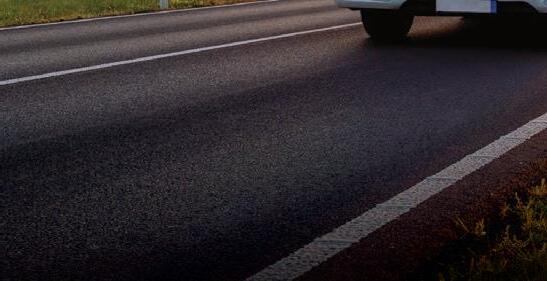

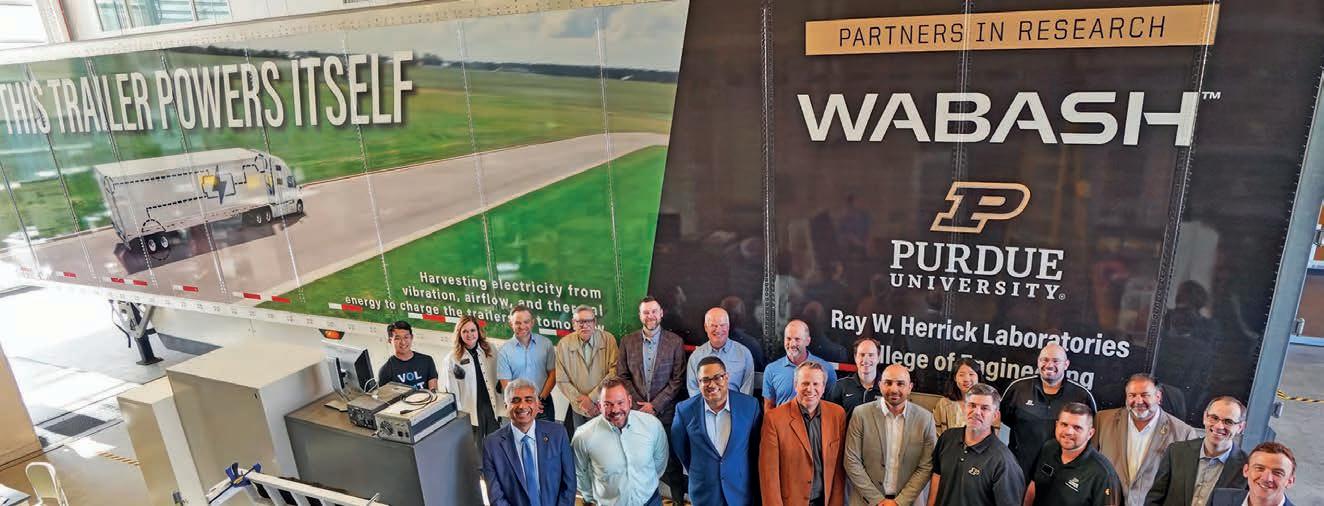
With trailers being involved in carrying more than 70 per cent of America’s freight, sustainability innovations can make a huge impact. Researchers at Indiana’s Purdue University knew they had some good ideas, but they needed a trailer.
When you need a trailer for research purposes, you can’t get any luckier than Purdue University engineering researchers. The largest trailer manufacturer in the United States just happened to be a 15-minute drive away.
The engineers took advantage of the opportunity and have teamed up with Wabash to investigate an experimental trailer that recaptures its own electricity from vibrations, heat and airflow.
The donated trailer is part of a three-year collaborative research project between Wabash, which is headquartered in Lafayette, Indiana, and Purdue University’s College of Engineering.
The trailer was recently showcased at an open house at Purdue’s Herrick Labs, where the first experiments are taking place.
Michael Bodey, the Director of Technology Discovery and Validation at Wabash, said the goal is to find costefficient sustainability solutions that also take advantage of the available waste energy from both vehicle movement and
payload. That usable energy, he said, could be used for things like propulsion, lights and electric TRU systems.
“When you think of a trailer in transport, the weight and speed of the system itself have a lot of potential energy available from the sheer motion of the trailer,” Bodey explained. “Now, if you add in all the different factors that would affect how much energy could be collected – the wind going around it, the amount that it takes to start and stop, the natural vibrations of movement – it is all being wasted. That led us to propose the question; what if we could turn that energy into something usable? What would it look like?”
Leading the project as one of its principal investigators is Associate Professor of Mechanical Engineering, James Gibert.
“Wabash has been a dream to work with,” he said. “They’re actively engaged, they’re supportive, they’re flexible, and they’re immediate in giving their feedback,” he said. “The best possible outcome for any engineer is having an impact on the world,
and Wabash certainly shares that vision.”
Gibert’s field of expertise is smart materials, especially in the realms of dynamics and vibration. His previous work has included embedding triboelectric generators into cardboard packaging, whose natural movement during the delivery process generates enough electricity to power sensors embedded in the boxes. Scaling up that process to something the size of a semi-trailer was the next logical step.
In broad terms, the collaboration is investigating ways to harvest electricity from a trailer’s normal operation. Those modalities could be the vibration of the suspension system, aeroelastic vibrations of the composite panels or harvesting the air used in the braking system.
“The scale is much bigger than anything we’ve worked with before,” said Gibert.
“But that’s a good thing. A semi-trailer has lots of mass, which means lots of opportunities for that mass to be utilised in ways it hasn’t before. Plus, there’s an increasing regulatory push for these
vehicles to be more energy efficient.”
Currently in phase one of the project, the team is focused on understanding what exists on the trailer and in research. Tasks involve, retrofitting the trailer with displacement sensors, accelerometers, anemometers, pressure gauges and many other measurement tools.
After Gibert and his team at Herrick Labs have turned the trailer into a mobile data acquisition system, Wabash personnel will take the truck onto the highways of Indiana for some short-haul and longhaul test drives. Once the Purdue team have collected data from the test drives,
other industries are tackling very similar problems and exploring how to apply that to a trailer.
“We plan to conduct trials with a fully instrumented trailer first,” Bodey said. “Then as we progress, we will collect data with the trailer on roads representing different regions of the country. For example, driving on flat roads compared to mountainous terrain has very different road conditions and implications.”
In terms of outcomes, Gibert said that reducing a trailer’s electrical load, even by a little bit, is a success.
“By diversifying the load, we can reduce
beginning has had a number of advantages, and the two sides – commercial and research – meet regularly to review and talk through their learnings.
Bodey said the best part, however, is taking the research and putting it into real terms.
“This isn’t a research project that’s only going to produce PowerPoint slides,” he said. “We’re developing a full 53-foot instrumented energy harvesting trailer to explore the potential of energy utilisation for electrification, with the end goal of investigating how such technology can contribute to the decarbonisation of
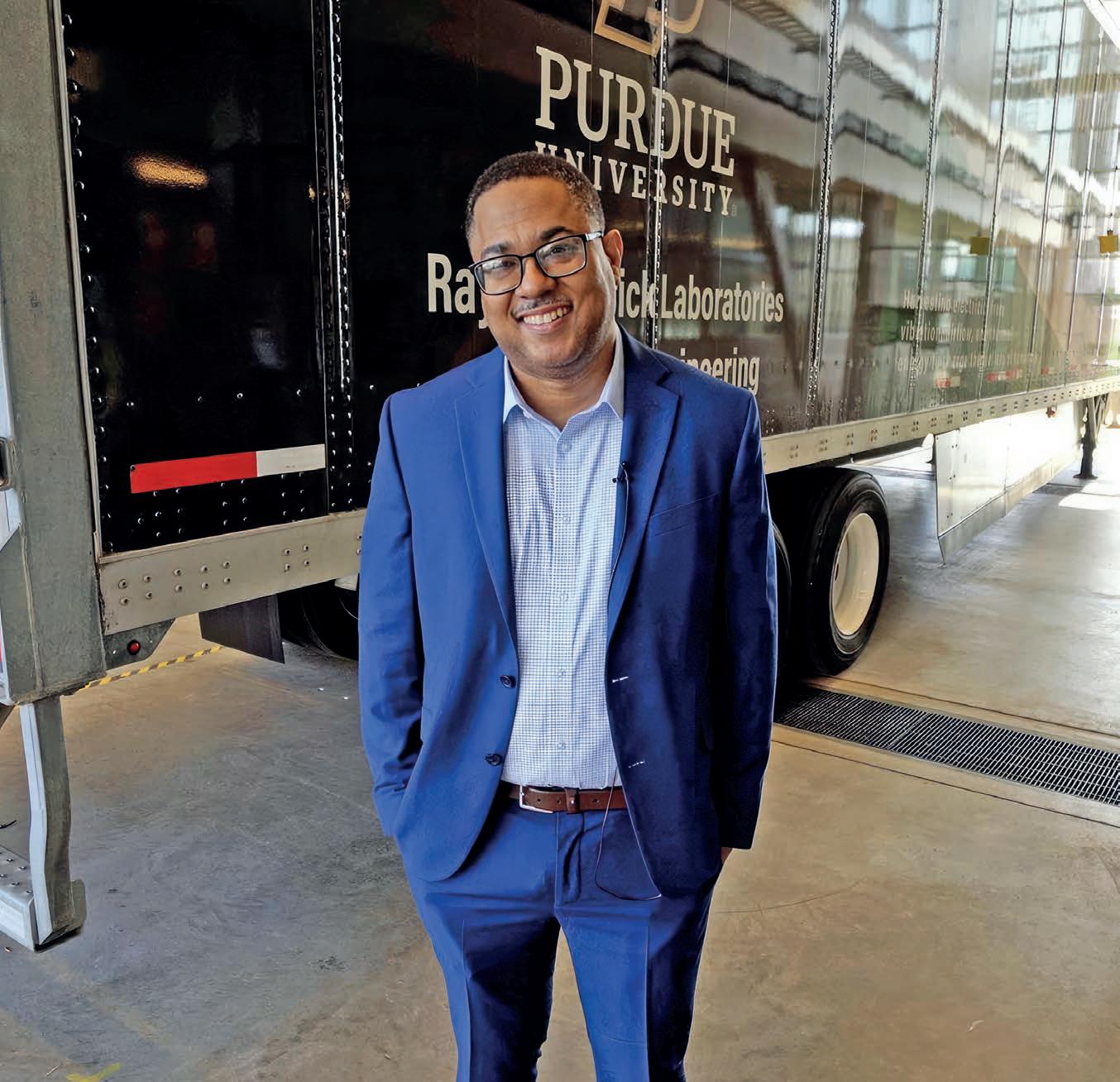

Tony Innaimo Transport recently took delivery of a commemorative Kenworth T909 and Performance-Based Standards B-double combination for its 30th anniversary.
In 1994, Tony Innaimo Transport was established by founder, Tony Innaimo, with just one truck. Headquartered in Canberra, the business progressed to become an interstate transporter with depots across ACT, New South Wales, Queensland and Victoria.
It’s now powered by a fleet of around 45 prime movers and 85 trailers, as well as 70 subcontractors doing local work along the east coast.
“It’s grown bigger than I thought it would in the last few years,” Tony says. “It’s been an unbelievable challenge and we’ve had some great results so far.
“We’ve got a lot of customers that have been with us for many years, and having them stick by us has been a godsend because it’s very tough out there at the moment.”
Since Tony purchased his first brand-new Kenworth in 2004, the OEM has been the fleet’s primary choice of truck supplied by Brown and Hurley Group in Coffs Harbour. Over the 20 years which followed, Tony
Innaimo Transport has accumulated a series of Kenworth T909s and T610s, as well as K200s and K220s in big cab variants.
“All of our K200 and K220s are big cabs,” Tony says. “They’re fitted out with microwaves, TVs, fridges and all those features to give our drivers that extra bit of comfort.
“We try and give them everything they need to survive during the weeks they’re away from home so that they’re not constantly having to go to the truck stop.”
The latest addition to this fleet is a special Kenworth T909 and PerformanceBased Standards (PBS) Krueger 34-pallet B-double drop deck mezzanine combination ordered and built specifically for the company’s 30th anniversary.
The prime mover is powered by a 600hp/2,050lb ft Cummins X15 Euro V engine, Eaton UltraShift PLUS automatic transmission and Meritor axles. Meanwhile the trailer set, measuring in at 27 metres, features a configured axle setup with the
rear axles brought forward to comply with the T909’s swept path. Its curtain designs are also unique for the fleet, being silver rather than the usual plain white and featuring a 30-year sign on the lead trailer and ‘Tony Innaimo Transport’ wording on the rear.
Both of these units were also launched in honour of Tony’s father, Frank, who passed away in January this year. The prime mover specifically pays tribute to him with ‘In Loving Memory of a Legend, Frankie’ written on the back wall.
“My father has been a massive help to me throughout the years, so we put something for him on the back of the truck,” Tony says. “It’s a tribute to a man that showed me what hard work was meant to be and how you can make a dollar and survive in life.
“There’s a lot of ups and downs in business as well as in general life, but he would always tell me, ‘If you just keep going, you’ll get there.’ He taught me a lot about hard work so that was a tribute to him as well.”


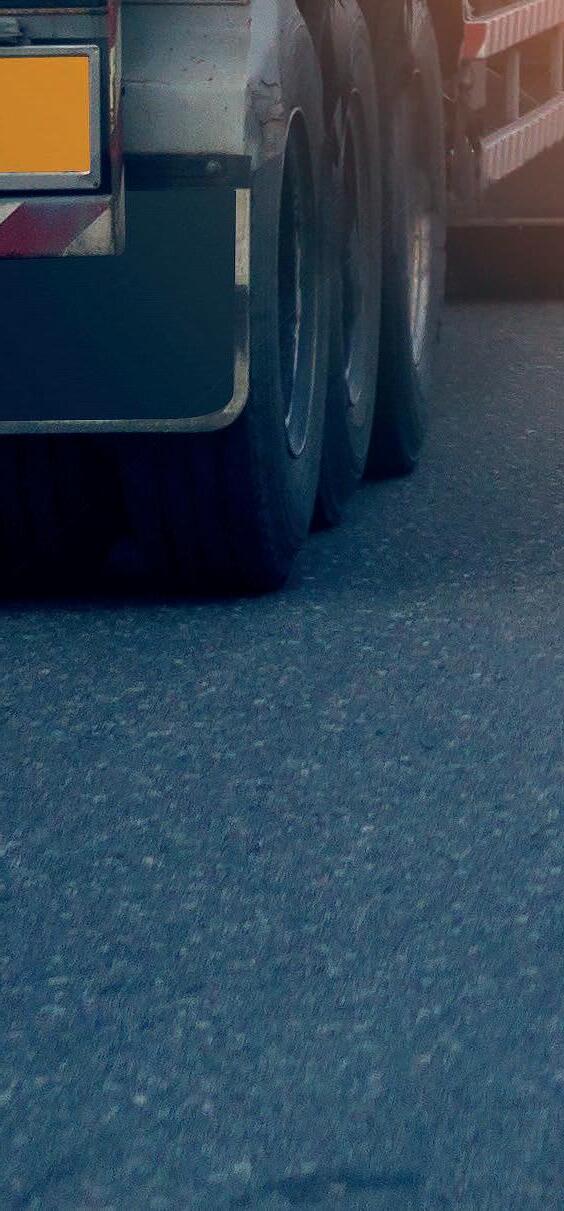





































Pencil in some information on dates and venues of various truck shows, field days and road transport industry conferences both locally and internationally. Got an upcoming event? Then let us know about it – email editor@trailermag.com.au
February
Queensland
LRTAQ Annual Conference 13-14 February
Gold Coast, QLD Visit: www.lrtaq.com.au/annual-conference
EvokeAG 18-19 February
Brisbane, QLD Visit: www.evokeag.com
March
Victoria
Wimmera Machinery Field Days 4-6 March
Horsham, VIC
Visit: www.wimmerafielddays.com.au
South East Field Days 21-22 March
Lucindale, SA Visit: www.sefd.com.au
Canberra
2025 National Rural Carriers Convention 4-5 April
Canberra, ACT Visit: www.lbrca.org.au/lbrca-events/conferences
Tocal Field Days 2-4 May
Paterson, NSW Visit: www.tocalfielddays.com
Queensland
Brisbane Truck Show 15-18 May
Brisbane, QLD Visit: www.brisbanetruckshow.com.au
National Diesel Dirt and Turf Expo 16-18 May
Sydney, NSW Visit: www.dieseldirtandturf.com.au
October
Victoria
Elmore Field Days 7-9 October
Elmore, VIC Visit: www.elmorefielddays.com.au
November
France
Solutrans 18-22 November
Lyon, France Visit: www.solutrans.fr
